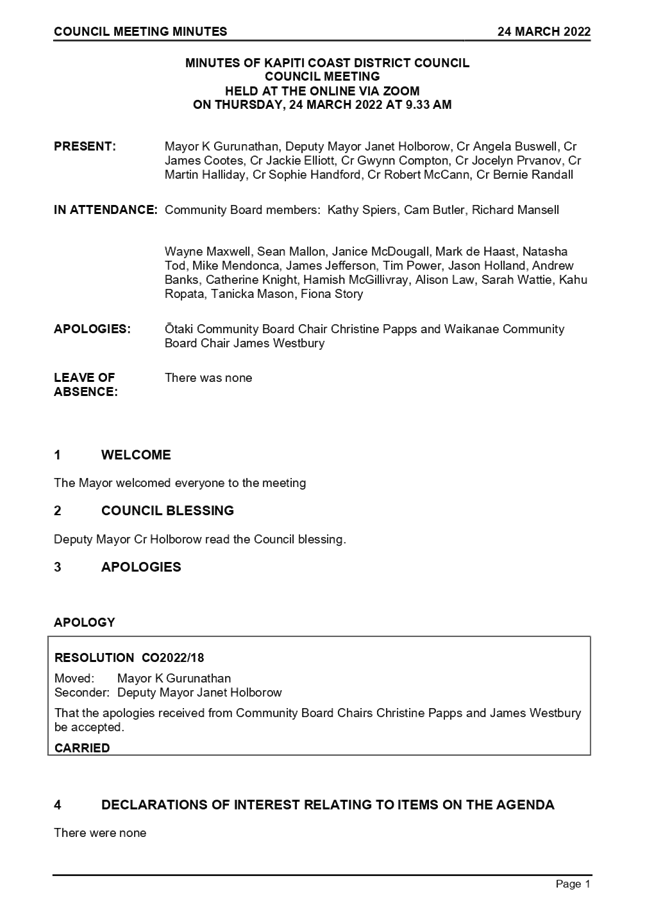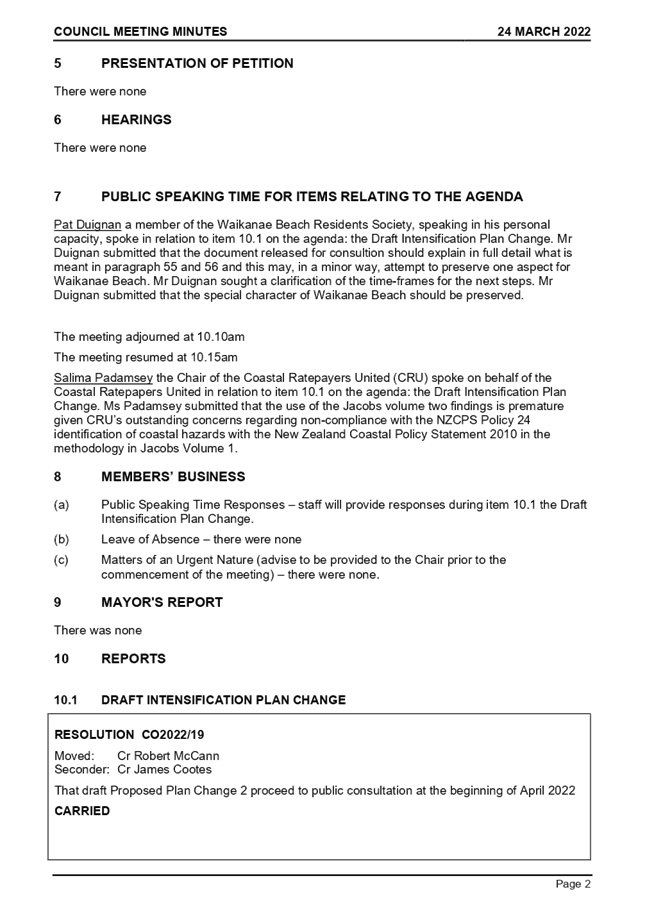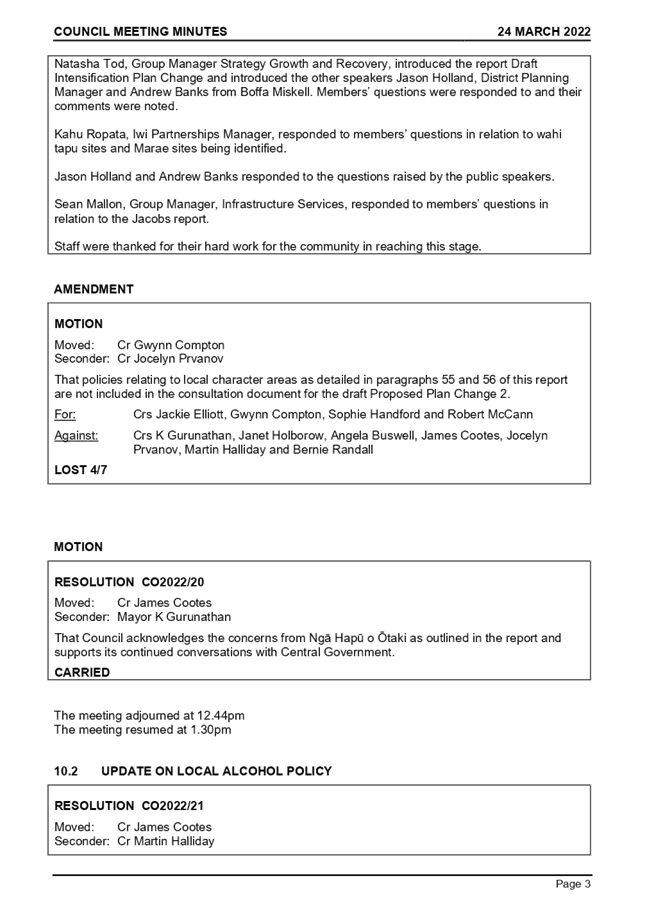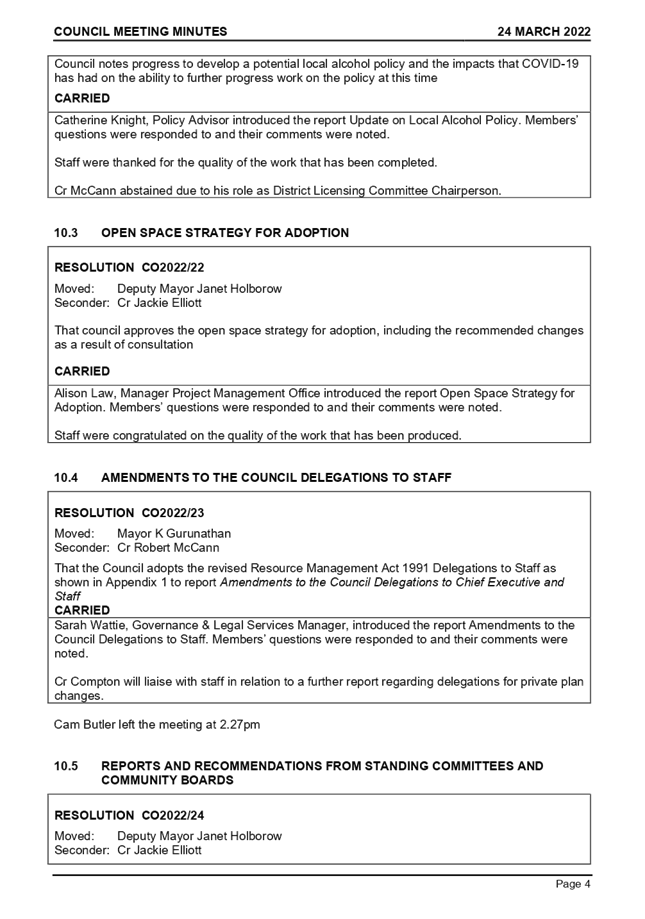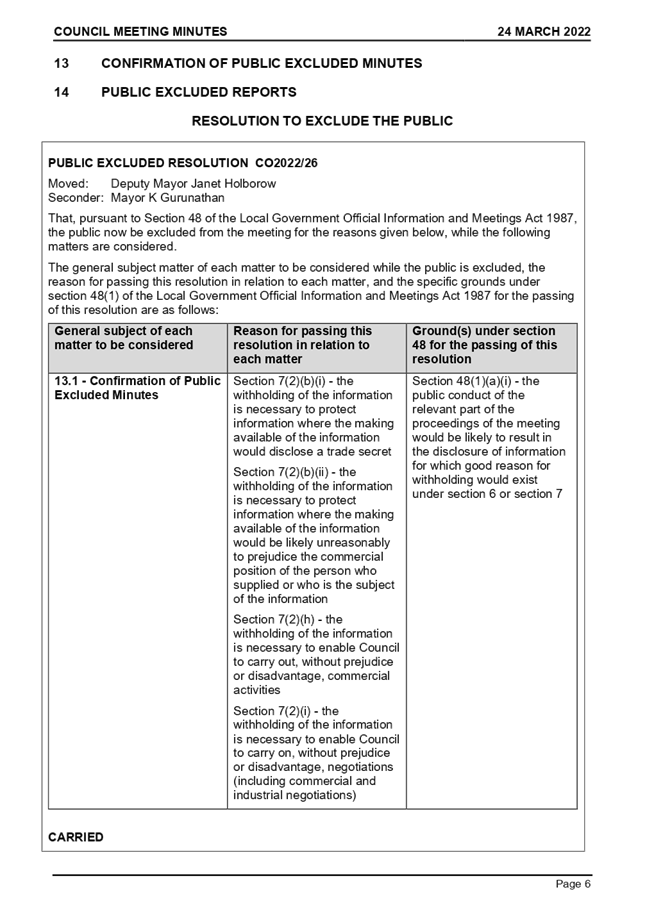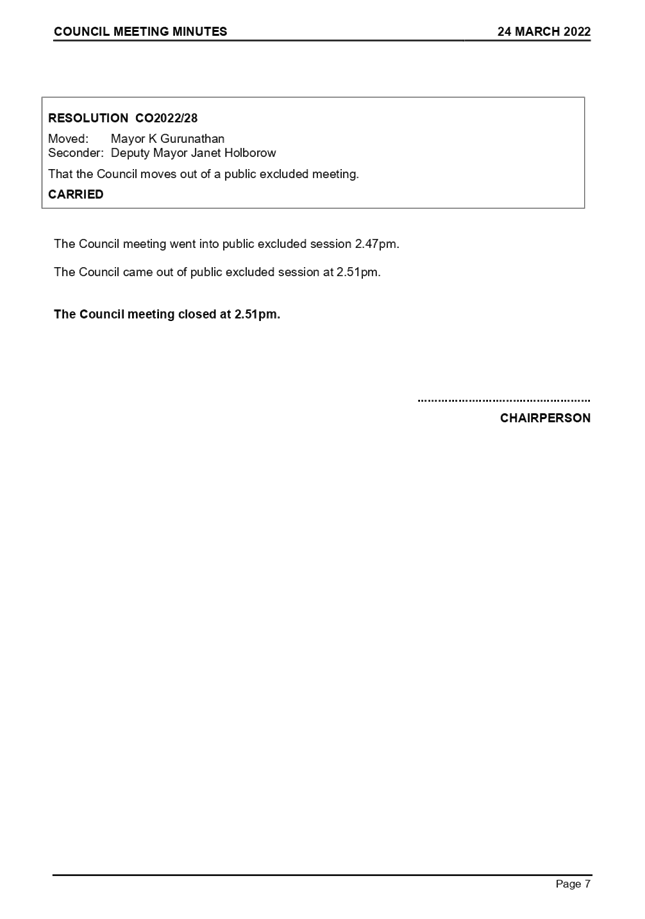|

|
|
AGENDA
Council Meeting
|
|
I hereby give notice that a Meeting of the Kapiti
Coast District Council will be held on:
|
|
Date:
|
Thursday, 7 April 2022
|
|
Time:
|
9.30am
|
|
Location:
|
Online
via Zoom
|
|
Wayne Maxwell
Chief Executive
|
|
Council
Meeting Agenda
|
7 April 2022
|
Kapiti Coast District Council
Notice is hereby given
that a meeting of the Kapiti Coast District Council will be held Online via Zoom, on Thursday 7 April 2022, 9.30am.
Council Members
|
Mayor
K Gurunathan
|
Chair
|
|
Deputy
Mayor Janet Holborow
|
Deputy
|
|
Cr
Angela Buswell
|
Member
|
|
Cr
James Cootes
|
Member
|
|
Cr
Jackie Elliott
|
Member
|
|
Cr
Gwynn Compton
|
Member
|
|
Cr
Jocelyn Prvanov
|
Member
|
|
Cr
Martin Halliday
|
Member
|
|
Cr
Sophie Handford
|
Member
|
|
Cr
Robert McCann
|
Member
|
|
Cr
Bernie Randall
|
Member
|
2 Council
Blessing
“As we deliberate on the
issues before us, we trust that we will reflect positively on the
communities we serve. Let us all seek to be effective and just, so that with
courage, vision and energy, we provide positive leadership in a spirit of
harmony and compassion.”
I a mātou e whiriwhiri ana
i ngā take kei mua i ō mātou aroaro, e pono ana mātou ka
kaha tonu ki te whakapau mahara huapai mō ngā hapori e mahi nei mātou.
Me kaha hoki mātou katoa kia whaihua, kia tōtika tā mātou
mahi, ā, mā te māia, te tiro whakamua me te hihiri ka taea te
arahi i roto i te kotahitanga me te aroha.
3 Apologies
4 Declarations
of Interest Relating to Items on the Agenda
Notification from Elected
Members of:
4.1 – any interests that
may create a conflict with their role as an elected member relating to the
items of business for this meeting, and
4.2 – any interests in
items in which they have a direct or indirect pecuniary interest as provided
for in the Local Authorities (Members’ Interests) Act 1968
5 Presentation
of Petition
Nil
6 Hearings
Nil
7 Public
Speaking Time for Items Relating to the Agenda
8 Members’
Business
(a)
Public Speaking Time Responses
(b)
Leave of Absence
(c)
Matters of an Urgent Nature (advice to be provided to the Chair prior to
the commencement of the meeting)
9 Mayor's
Report
Nil
10 Reports
10.1 Should
the Council join C4LD - Communities 4 Local Democracy
Kaituhi |
Author: Ian
Clements, Strategy Advisor
Kaiwhakamana
| Authoriser: Sean Mallon, Group Manager Infrastructure
Services
Te pūtake |
Purpose
1 The
purpose of this paper is to seek Elected Members’ views on whether or not
the Council should join the Communities 4 Local Democracy (C4LD), a local
government action group formed directly in response to the government’s
proposed Three Waters Reform.
He
whakarāpopoto | Executive summary
2 This
paper considers whether or not the Council should join C4LD – Communities
4 Local Democracy.
Te tuku haepapa
| Delegation
3 The
Council has the delegation to make this decision.
Taunakitanga | RECOMMENDATIONS
A. That
the Council should / should not join Communities 4 Local Democracy.
Tūāpapa | Background
4 In
July 2020, the Government launched the Three Waters Reform Programme – a
three-year programme to reform local government three waters service delivery
arrangements in a way that improves health and wellbeing outcomes to benefit
all communities in New Zealand.
5 On
27 October 2021, following an eight-week engagement process through August and
September, the Government announced that it would create four publicly owned
water entities to manage and operate the infrastructure assets for three
waters.
6 The
Government has progressed legislation to enable this change, with a Select
Committee process likely to commence in mid-2022, to ensure the new water
service entities can efficiently and effectively commence operations by no
later than 1 July 2024
7 While
the Council supports the need for reform and the need for regulation, it has
significant concerns with the government’s proposal for four publicly
owned water entities and the manner in which this outcome was reached.
8 The
Council’s feedback to the process was approved on 30 September 2021 and
sent to the Department of Internal Affairs (DIA), and can be found here: Minute
Item Attachments of Council Meeting - Thursday, September 30, 2021
(infocouncil.biz)
Communities 4 Local Democracy (C4LD)
9 C4LD
is a grouping of councils seeking to encourage central government to consider
alternative models for Three Waters Reform. They currently represent 31
councils and around 1.5 million people.
10 C4LD
believes that there’s a better way to achieve the government’s
objectives and they want to work in partnership with them to achieve these
objectives. They believe that they can do better than the ‘one size fits
none’ proposals from the government, and that they can deliver better
services while still remaining affordable and locally responsive.
11 In
December 2021, 24 councils signed an MOU in relation to their campaign to alter
the government’s intentions to proceed with their Three Waters proposal.
The MOU sets out the objectives of the Three Waters Campaign (subsequently
branded as C4LD) and how these objectives could be achieved through a
partnership basis.
12 Since
December 2021, a further seven councils have signed the MOU, a copy of which is
attached as an appendix to this report.
Three Waters briefing, 8 March 2022
13 At
the briefing, the following guest speakers presented to the Council:
13.1 Simon
Watts (National Party MP and local government spokesperson)
13.2 Mayor
Campbell Barry (Hutt City Council & member of the Three Waters Reform
independent Working Group)
Dougal List (Project Director
– Regional Water Reform)
13.3 Mayor
Dan Gordon (Waimakariri District Council & C4LD Deputy Chair)
Malcolm Alexander (C4LD Project
Manager)
14 The
speakers relayed their views on the current status of the Three Waters Reforms
and, in the case of Simon Watts and the C4LD speakers, set out how they thought
the proposed reforms could be done differently.
He
kōrerorero | Discussion
He
take | Issues
15 Councillors
are being asked to consider that in addition to engaging with the DIA led Three
Waters reform process, that Council also supports C4LD, both morally and
financially.
16 Central
government is progressing with Three Waters Reform, following decisions to
proceed made in October 2021. It is expected that this reform will proceed
through parliamentary decision making by July 2022, therefore any influence
from C4LD on the reform process has to occur in a short timeframe.
17 At
the briefing on 8 March, Mayor Dan Gordon, the Deputy Chair of C4LD presented
its views on an alternate approach to Three Waters reform. This approach has
also been submitted to MBIE (December 2021) and to a Ministerial Working Party
(January 2022).
Ngā
kōwhiringa | Options
18 There
are two options available to the Council, to either join or not join
C4LD.
19 If
the Council chooses to join C4LD, it may have the following advantages and disadvantages:
Advantages
19.1 It
reinforces the message to our community and the government that we still have
concerns over the proposed reforms and that we stand by our submission of 30
September 2021.
19.2 It
shows support for other councils who also have concerns around the proposed
reforms and provides financial support to C4LD to review / consider alternative
options in the short time frame that exists.
Disadvantages
19.3 LGNZ
has for a long time been seen as the group that represents all of local
government. If the Council decides to support C4LD as well, there could be
times when LGNZ and C4LD present conflicting views to the government and other
organisations. This could weaken the overall representations of local
government and also impact local government credibility.
19.4 Working
with C4LD and / or updating the Council, depending on the demands made and the
extent to which they are taken up, could create additional resource pressures
for Council staff.
19.5 June
/ July 2022 is the anticipated deadline for influencing the legislation to
establish the proposed four water entities. It is unclear if C4LD will have
enough time to influence proposed legislation between now and then. C4LD
activities beyond this point could create confusion for the public and
additional staff workload.
19.6 The
Council will have to fund the immediate request for $15,000, which is currently
unbudgeted, and it is unclear as to what, if any, further funding will be
required.
20 If
the Council chooses not to join C4LD, it may have the following
advantages and disadvantages:
Advantages
20.1 It
would allow the Council to focus on the current Three Waters reform programme
of work, stimulus funding projects management, wider RMA and Local Government
reform workstreams, as well as managing other business as usual.
20.2 It
would send a message of support to LGNZ and the government, acknowledging the
importance of working together as a sector, which is more important now than
ever.
20.3 The
currently unbudgeted $15,000 and any future funding requests would not impact
already stretched budgets.
Disadvantages
20.4 It
may signal to those in our community who are against the proposed reforms that
the Council is not doing as much as it could to influence / change the
direction of the reforms.
Tangata whenua
21 The Crown is currently leading the engagement with
iwi/Māori, mana whenua and DIA expect to continue its engagement on three
waters service delivery reforms with iwi/Māori throughout the reform
programme lifetime (anticipated to take until 1 July 2024). The Water Services
Entities, when live, will also be required to form relationships with mana
whenua and resource this relationship.
22 Mana Whenua involvement in the reform programme, whether
working alongside DIA and / or the Council, will ensure that a strong
foundation is built which will enable active engagement when and if the
government proceeds with its three water reforms.
Panonitanga āhuarangi | Climate change
23 Climate
considerations (both mitigation and adaptation), resilience and environmental
impacts are drivers of the reform process. While there are no specific impacts
arising from this report the decisions that occur post July 2022 will have an
impact on climate and environmental issues.
24 Based
on this climate change assessment, the decisions and matters of this report are
assessed to have low climate change implications and considerations, in
accordance with the Council’s Climate Emergency Action Framework.
However, the wider Three Waters reform discussion can be assessed to have major
climate change implications and considerations, with regard to both emission
reduction (mitigation) and resilience building (adaptation).
Ahumoni me ngā rawa | Financial
and resourcing
25 The
cost of membership of this group is $15,000, which the Council has not budgeted
for in its 2021 Long Term Plan.
Ture me ngā Tūraru | Legal
and risk
26 The
MOU contains some common objectives C4LD is working towards, how it will
partner with councils and what it will agree to work on.
27 The
MOU isn’t a binding legal document – it is an agreement to enable
councils to partner with each other for a common purpose.
Ngā pānga ki ngā kaupapa here | Policy impact
28 There
are no policy impacts.
Te whakawhiti
kōrero me te tūhono | Communications & engagement
Te mahere tūhono | Engagement
planning
29 This
matter has a low degree of significance under Council’s Significance and
Engagement Policy and an engagement plan is not required. The future of water
services delivery is considered to be a significant issue however, this report
does not commit the Council to a decision relating to that reform.
Whakatairanga |
Publicity
30 The
community will be updated on the outcome through the usual Council channels.
Ngā āpitihanga | Attachments
1. Memorandum
of Understanding between Partner Councils In relation to their 3 Waters
Campaign ⇩ 
|
Council
Meeting Agenda
|
7 April 2022
|




10.2 Update
on the final draft chapter of Kapiti Coast District's Housing Assessment under
the National Policy Statement on Urban Development
Kaituhi |
Author: Hamish
McGillivray, Manager Research & Policy
Kaiwhakamana
| Authoriser: Natasha Tod, Group Manager Strategy, Growth and
Recovery
Te pūtake |
Purpose
1 To
update Council on the final draft findings of Kapiti Coast District’s assessment
of housing capacity under the National Policy Statement on Urban Development.
He
whakarāpopoto | Executive summary
2 This
report provides an update on findings of the assessment of residential
development capacity required under the National Policy Statement on Urban
Development 2020.
Te tuku haepapa
| Delegation
3 Council
has the delegation to note findings from this report.
Taunakitanga | RECOMMENDATIONS
A.
That Council notes findings of the final draft of Kāpiti Coast
District’s Housing Development Capacity Assessment update (HBA) and its
supporting Assessment of Councils Infrastructure Capacity
B.
That council notes that the Kāpiti Coast District’s HBA
chapter and supporting infrastructure assessment of capacity will be finalised
and published as part of the Wellington Regional HBA alongside other districts
chapters once completed.
Tūāpapa | Background
4 The
National Policy Statement on Urban Development Capacity (NPS-UDC) came into
effect in December 2016. The NPS-UDC was designed to support well-functioning
urban areas by ensuring enough development capacity is provided to meet current
and future housing and business needs. A core requirement of the NPS-UDC was
for high growth councils to undertake a housing and business capacity
assessment (HBA) every three years.
5 In
2020 the NPS-UDC was replaced by the National Policy Statement on Urban
Development (NPS-UD). Under the NPS-UD Kāpiti Coast District Council is
identified as a ‘Tier 1’ council. This requires it to meet a number
of NPS-UD requirements including continuing to undertake an HBA every three
years; and undertake quarterly monitoring and annual reporting of a range of indicators.
6 Changes
to the NPS-UD brought forward the timing for the next assessment for the end of
July 2021, but only requires the assessment of residential capacity to be
updated, ahead of a full assessment of housing and business in 2024.
7 Under
the NPS-UD, Kāpiti Coast District continues to be part of the Wellington
Urban Area alongside Wellington, Porirua, Hutt and Upper Hutt City Councils,
and Greater Wellington Regional Council. Over the last two years,
councils’ have been working to produce a joint assessment of development
capacity across the Wellington urban area.
8 The
HBA assesses the amount of development capacity available and whether this is
sufficient to meet future demand for residential development across the next 30
years (2021 -2051) broken down into short (2021-2024), medium (2024-2031) and
long-term (2031-2051), periods. The assessment also identifies the current or
planned availability of local infrastructure to support development.
9 Providing
sufficient levels of development capacity is intended to support more
competitive land markets, provide a range of housing choices, and help make
housing more affordable.
10 The
HBA provides evidence of the current state to support decisions shaping the
growth and development of well-functioning urban areas. This includes the
ability to identify and respond early to changing residential and business
needs, supporting resource consenting processes, and enabling further
development capacity under district plans.
11 With
assessment work now completed, the final Wellington regional HBA is being
prepared for publication. This report provides Kāpiti Coast
District’s final draft chapter for noting ahead of the Wellington
Regional HBA report being published.
12 The
attached final draft Kāpiti Coast District HBA chapter will sit alongside
a regional overview and chapters from the other Wellington Councils and in the
final Wellington Regional HBA report.
He
kōrerorero | Discussion
Methodology for assessing residential and business demand
and capacity
13 The
HBA assessment combines future growth forecasts with spatial modelling and
economic analysis to identify whether sufficient development capacity is
currently available to meet future demand. Further details of the methodology
are set out in the final draft HBA attached as Appendix 1 to this report.
14 For
residential demand, our 30-year median population and housing forecasts
produced by Sense Partners have been used by all councils as the baseline to
identify the amount and type of future household and dwelling growth. This
demand for dwellings is then inflated by an additional 20% and 15% for the
short-medium and long-term period. This is a requirement of the NPS-UD and
provides and additional competitiveness margin that supports choice and
competitiveness for housing markets.
15 Modelling
is then used to identify potential development capacity of the current
provisions of the District Plan. This includes greenfield development scenarios
on large residential and future urban zoned sites, and infill and redevelopment
scenarios of existing residential areas. This process takes into account
constraints (such as designations, natural hazards and ecological areas) that
prevents some areas from being developed.
16 This
theoretical ‘plan-enabled capacity’ is then combined with further
economic analysis to identify what of that development capacity is feasible and
likely to be built (realised). This uses a number of current market factors,
including the price of land, land development costs, building costs and likely
motivations to develop.
17 It
is important to note that this modelling of capacity is not reflective of draft
Plan Change 2 (Intensification) which opens for consultation from 4 April 2022
and is anticipated to result in significant increase in development capacity.
Residential demand and capacity – key findings
18 The
HBA has identified that there is sufficient development capacity at the
district level to meet forecast demand for housing over the short and medium
term ((2021 – 2024) – (2024 – 2031)), but insufficient
capacity to meet demand across the full long-term period (2031 – 2051).
This is summarised in Table 1 below.
19 Table
1: Sense Partners (median growth) assessment of residential development
capacity (dwellings)
|
Type
|
2021-2024
|
2024-2031
|
2031-2051
|
TOTAL
|
|
Demand
(inflated with 20%/15% buffer)
|
1,756
|
4,367
|
10,063
|
16,185
|
|
Development
capacity (realisable)
|
7,818
|
7,818
|
|
Balance
|
6,882
|
2,515
|
-8,367
|
-8,367
|
|
Sufficiency
|
Yes
|
Yes
|
No
|
|
20 Overall,
Kāpiti District’s median population forecast estimates the district
will grow by 31,814 people from 2021 to 2051. The demand for housing to meet
this need will require an additional 13,852 new dwellings. Inflating this for
the additional demand will see 16,185 additional dwellings required across the
district by 2051.
21 Based
on forecasts of future household composition, 57% of all new housing is
expected to be standalone, while terraced housing, flats and apartments are
expected to make up 43% of all new housing.
22 Modelling
identified a theoretical plan-enabled capacity of 17,983 additional dwellings
across the district. This includes 3,116 from greenfield and future urban
zones, and 14,867 from infill/redevelopment of existing areas.
23 Of
this, 10,097 dwellings are considered feasible to develop based on current
market factors. 7,331 of these are in brownfield/infill areas and 2,766 in
greenfield areas.
24 However,
not all feasible development will be built. Further testing of the likelihood
of feasible capacity being built identified a realisable development capacity
of 7,818 dwellings, as shown in Table 1 above.
25 A
key difference to the 2019 assessment is that growth is expected to double what
was considered in the first HBA assessment. While an increase from that period,
the projected level of growth is consistent with the districts recent long run
annual average growth rate of 1.5% percent. The demand for joined terrace
housing and apartments (medium density typologies) is also forecast to increase
as part of this growth. The 2019 assessment identified that while some of these
medium density typologies were feasible, none were realisable at that time
given more complex development risks and market preferences.
26 However,
the economic analysis supporting this assessment has identified an increase in
the number of these types of development that are realisable in the current
market, where demand and prices have further increased since the last
assessment. This is supported by the increased level of interest and activity for
the development of multi storeyed townhouses and apartments emerging around
Paraparumu, Raumati and Paraparaumu Beach areas.
Infrastructure Capacity – key findings
27 A
key part of the HBA includes assessment of available or planned capacity across
the Council’s drinking, waste and stormwater networks (three waters),
local roading and parks and open space networks. The detailed assessment can be
found at Appendix 2.
28 As
previously mentioned, a key factor identified in this assessment was the
increase in growth forecast. Overall, the assessment of Council’s
networks found that while the current future planned upgrades and extensions to
Councils networks provide sufficient capacity to meet anticipated growth across
the district in the short and medium term, the increase in growth presents
challenges and opportunities for how longer-term growth is supported. This
includes looking at the shape and nature of infrastructure networks required to
support and enable good outcomes alongside the future growth of the district.
29 A
number of infrastructure networks such as open space and stormwater previously
met growth needs on a case-by-case basis as development has emerged. This has
been assisted by hydraulic neutrality requirements in the District Plan.
However, the scale of future growth and shifting balance between greenfield
growth and intensification may require different long-term approaches in order
to meet future growth outcomes.
30 The
nature and location of future growth also creates a challenge for water and
wastewater networks as they are impacted by increasing physical costs to
develop and maintain their efficiency and effectiveness as networks grow and
expand, but also the costs of meeting higher health standards and environmental
controls relating to receiving environments.
31 Improvements
in mode share and public transport are also important to improve accessibility
and alleviate congestion across the district. This is increasingly important as
the district grows and intensifies. The East-West connector road is one project
planned to alleviate congestion in Paraparaumu and support future growth, with
improved public transport services (both bus and rail) key to supporting all
growth across the district, but particularly in Ōtaki where existing deficiencies
need to be addressed in addition to future growth anticipated in the area. This
is particularly important as it borders two regional boundaries and sits at the
heart of the northern gateway as part of the Wellington Regional Growth
Framework.
32 The
Long Term Plan 2021-2041 confirmed a significant increase in capital funding to
support additional infrastructure capacity needs across the next 30 years.
Following the recent adoption of the District Growth Strategy, further
assessment work will be undertaken of the growth needs of the district and help
inform planning and investment as part of the Long-Term Plan and Infrastructure
Strategy in 2024, as additional investment is almost certainly necessary to
make appropriate provision for this growth over the long term.
Housing Demand for other groups
33 One
new requirement introduced for the HBA under NPS-UD was to provide further
details on how well current and likely future demands for housing by Māori
and different groups in the community are met, including the demand for
different types and forms of housing (such as for lower-cost housing,
papakāinga or student accommodation).
34 This
HBA provides an initial overview to help provide some context around different
demands and pressures affecting different parts of the community including
Māori households, public housing, student accommodation and visitor
accommodation. The HBA also notes the work that Council, in partnership with
local iwi, is currently undertaking with regards to a Housing Needs and Social
Impact Assessment which is capturing more detailed quantitative and qualitative
information to help inform understanding of a variety of demand pressures
across the district, across the housing continuum.
35 This
includes research with our iwi partners into the housing and social needs in
their rohe. The findings from the needs assessment will help inform assessment
of housing demand for other groups as part of the next HBA.
Inserting housing bottom lines
36 Another
requirement of the NPS-UD is for housing bottom lines to be inserted into
Council’s District Plan once the HBA is public. This will identify the
demand and levels of housing forecast across the short-medium term and
long-term periods in the District Plan to be considered as part of any planning
processes.
37 This
must be undertaken as soon as practicable and without using the Schedule 1
process under the Resource Management Act 1991 (RMA). The District Plan
team is aware of this requirement and will look to progress the change to the
District Plan once the final Wellington Regional HBA is finalised and
published. This will take the same process as the NPS-UD requirement for
removing parking provisions – where the change is made directly to the
plan with a notification provided to inform the public of the change.
Responding to insufficiency
38 The
HBA provides information on housing demands and how that reflects against
development setting and changes in the local housing and development markets.
This is a key tool to support ongoing discussion with the development
community, iwi, central government and other organisations to help provide
development capacity but also meet current and future housing and business
needs.
39 Under
the NPS-UD, the identification of shortages in the HBA requires Council to
notify the Minister for the Environment and look to increase development
capacity in its District Plan as soon as practicable as well as update any
relevant plan or strategy alongside any other options to increase development
capacity or otherwise enabling development.
40 Council
is well placed in having just adopted the District Growth Strategy which sets a
30-year direction for where, how and when the district grows to meet future
population growth. This includes growing up and out to meet the future growth
needs of the district. A key change to the District Plan is also underway (Plan
Change 2 – Intensification) which will help implement the new District
Growth Strategy and respond to requirements for councils to enable
intensification under the NPS-UD. This plan change also incorporate changes enabling
greater density of development in existing residential areas in line with the
medium density residential standards that were made by amendment to the RMA
late last year. This plan change will be notified before 20 August 2022 and
provide additional development capacity to meet the increased needs of the
district. Councils Long Term Plan 2021-2041 also provides for a further urban
development plan change scheduled for notification in 2024, and other plan
changes scheduled relating to mana whenua, flooding and coastal issues.
41 As
previously mentioned, Council is also currently preparing a Housing Needs and
Social Impact Assessment. Alongside the HBA, the needs assessment will help us
better understand the full nature and extent of housing demand across our
district. A Housing Strategy is also in the process of being developed.
Informed by both the HBA and needs assessment, the Housing Strategy will guide
Council’s work and partnerships with iwi, central government, developers
and community housing providers to deliver better housing outcomes for our
community.
42 These
future focussed pieces of work will help inform the next full HBA and
preparation to support the 2024 Long Term Plan. Regular monitoring will be used
to continue to identify changes affecting housing and business, support ongoing
discussion with the local development community and support monitoring of the
District Growth Strategy.
He
take | Issues
Assessing the impacts from the new residential medium
density standards and intensification
43 It
is important to note that this assessment is based on the current District Plan
and does not take into account changes made by the Medium Density Residential
Standards introduced to the RMA or changes to the District Plan that are
underway to give effect to NPS-UD requirements for intensification. These
changes are anticipated to result in significant increase in development
capacity that will be assessed in the next HBA.
Modelling processes
44 One
of the challenges faced by councils was the technical challenges with updating
modelling developed under the first HBA. A number of simplifications were
necessary in order to complete this assessment across councils. Early
discussions are underway to explore how modelling can be standardised and
capacity developed to support future HBA processes as part of joint work under
the Wellington Regional Growth Framework.
Ngā
kōwhiringa | Options
45 This
report notes the findings of the final draft HBA and does not contain options
for consideration.
Tangata whenua
46 This
assessment has not included direct engagement with our iwi partners. However as
noted earlier, Council is working in partnership with local iwi to undertake a
Housing Needs and Social Impact Assessment. This will capture more detailed
quantitative and qualitative information and help inform understanding of a
variety of demand pressures across the district, across the housing continuum.
This includes research with our iwi partners into the housing
and social needs in their rohe. This more detailed information will be
used to inform and support future HBAs and work underway by Council to support
the delivery of affordable housing to meet the district’s needs.
Panonitanga āhuarangi | Climate change
47 The
HBA is an evidence base that helps inform future decisions relating to the
provision of development capacity and infrastructure capacity. While modelling
takes into account elements and impacts of climate change (including planning
limitations on the developability of land such as flooding, and the impacts of
climate change reflected into infrastructure capacity assessments such as the
frequency, duration and intensity of weather events), it does not directly take
into account climate change considerations. However, this HBA is an input for
others to consider alongside processes and decisions that do have a direct
bearing on council’s climate change goals.
Ahumoni me ngā rawa | Financial
and resourcing
48 There
are no direct financial implications associated with this report and updated
housing assessment. The next HBA assessment process is expected to commence
later this year and will cover both housing and business demand and supply.
This work will be coordinated as part of the Wellington Regional Growth
Framework and will involve ongoing development of development capacity
modelling. This is anticipated to be able to be met within existing budgets.
Ture me ngā Tūraru | Legal
and risk
49 Under
the NPS-UD the Council was due to complete the HBA by the end of July 2021.
Additional challenges in modelling each of the collective councils’ data
has led to delays in meeting this timeframe but the Ministry of the Environment
have been kept informed of progress along the way.
Ngā pānga ki ngā kaupapa here | Policy impact
50 The
policy impacts and requirement to respond to the HBA’s shortage of
sufficient developable capacity are addressed in the discussion above.
Te whakawhiti
kōrero me te tūhono | Communications & engagement
51 The
HBA is a technical process supporting councils planning and investment process.
No public consultation has been undertaken as part of the assessment process.
Te mahere tūhono | Engagement
planning
52 This
matter has a low degree of significance under Council’s Significance and
Engagement Policy and an engagement plan is not required.
Whakatairanga |
Publicity
53 The
release of the Wellington Regional HBA will be coordinated across the other
Wellington Councils. Once published a copy of the report will be available on
Councils 'Urban Development' webpage and stakeholders will be notified. At the
time of writing this report we anticipate the Regional HBA being published in
May 2022.
Ngā āpitihanga | Attachments
1. Final
draft Kāpiti Coast District HBA chapter 2021 ⇩ 
2. Kāpiti
Coast District Council HBA Infrastructure Assessment 2021 ⇩ 
|
Council
Meeting Agenda
|
7 April 2022
|


































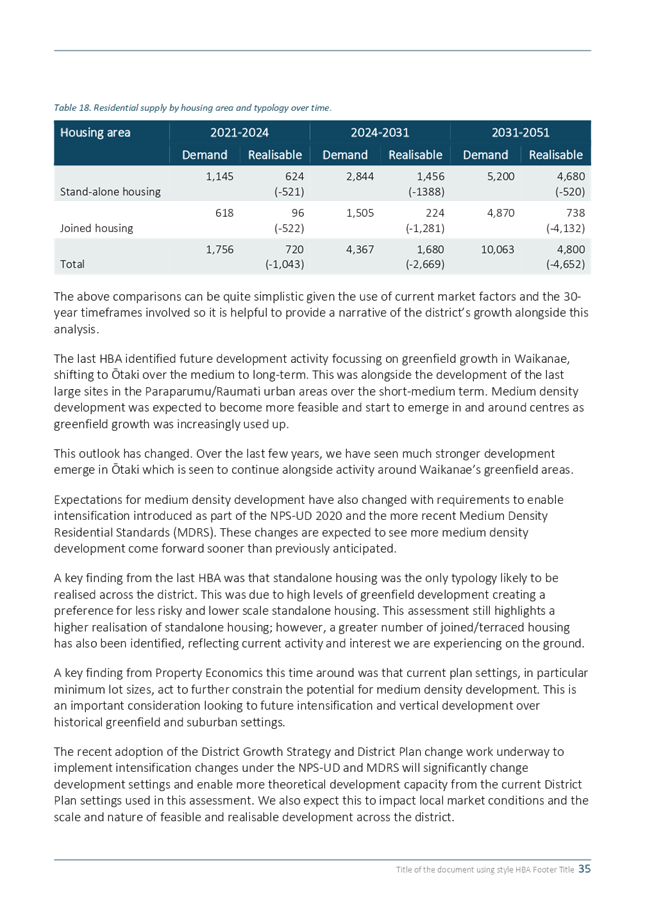


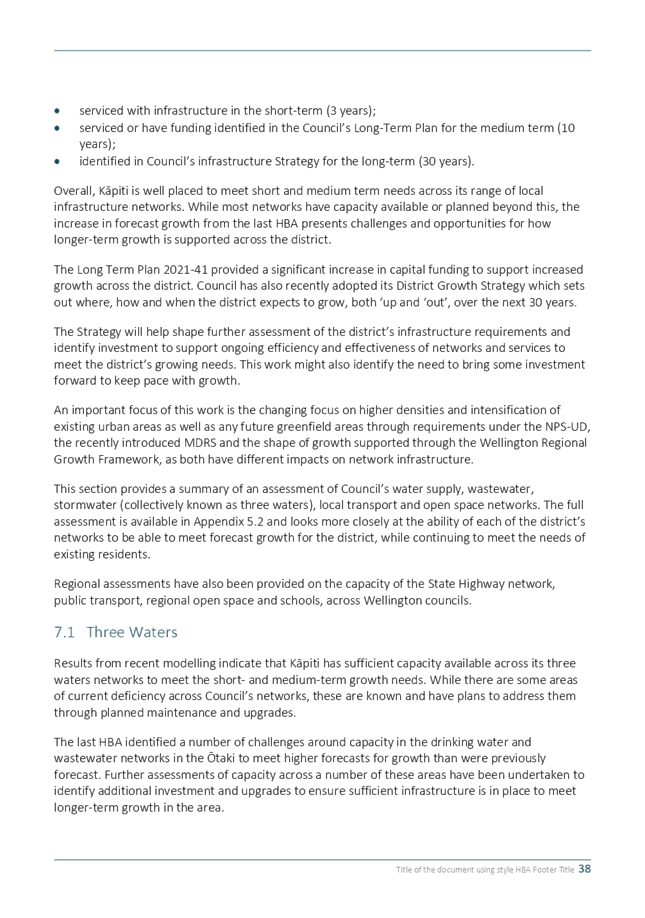
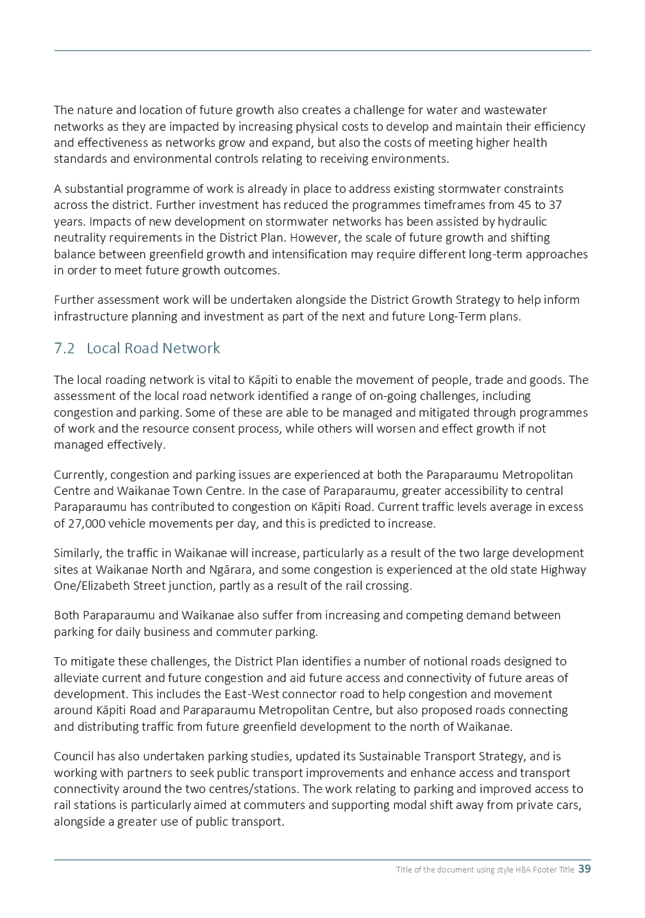
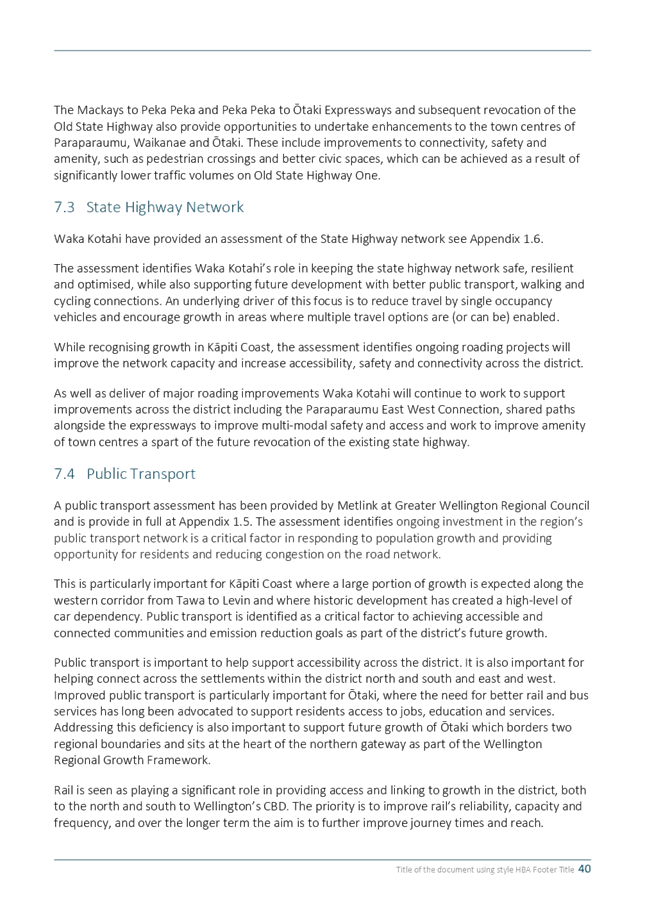
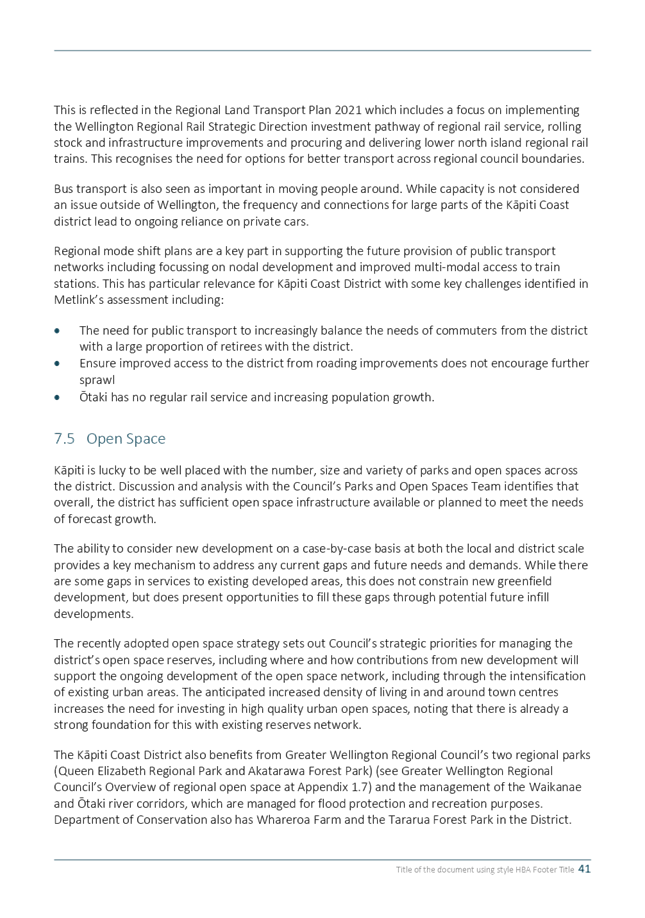

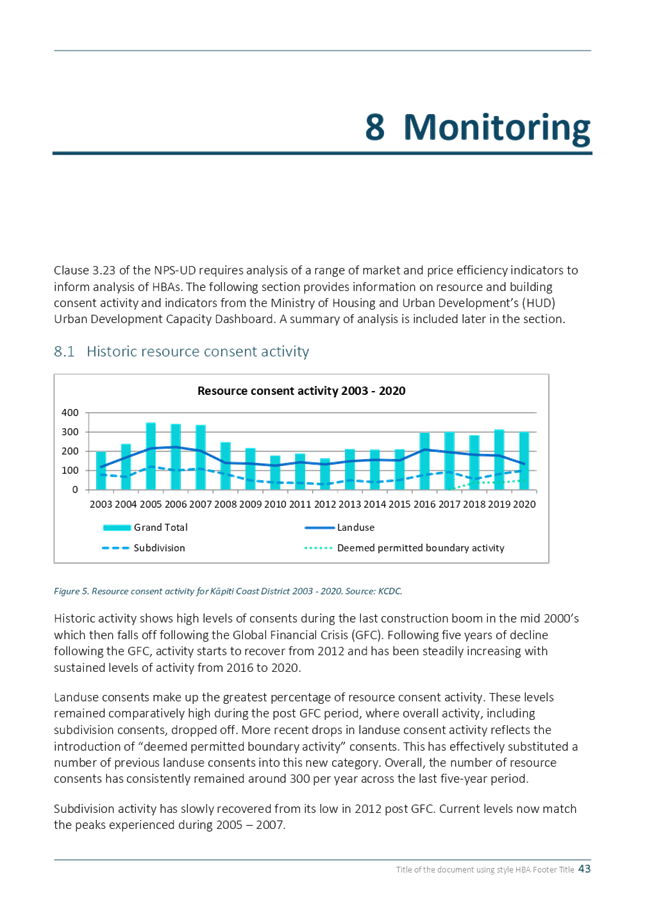

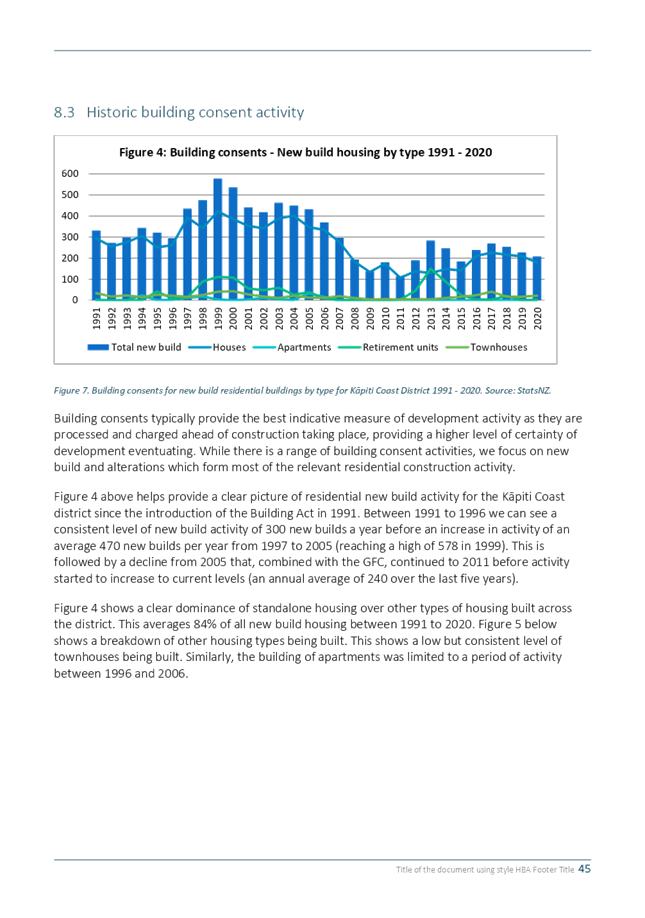
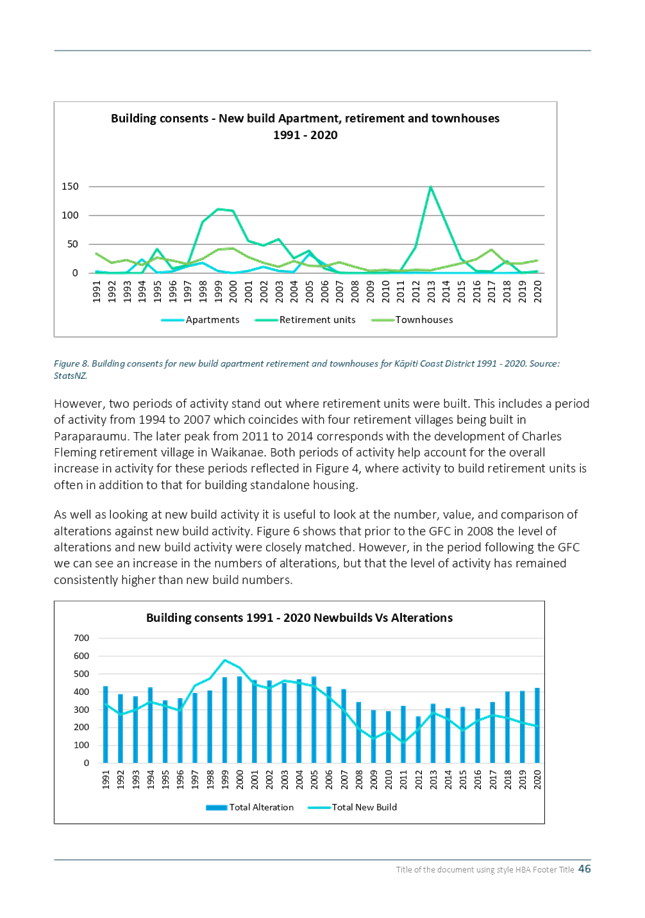
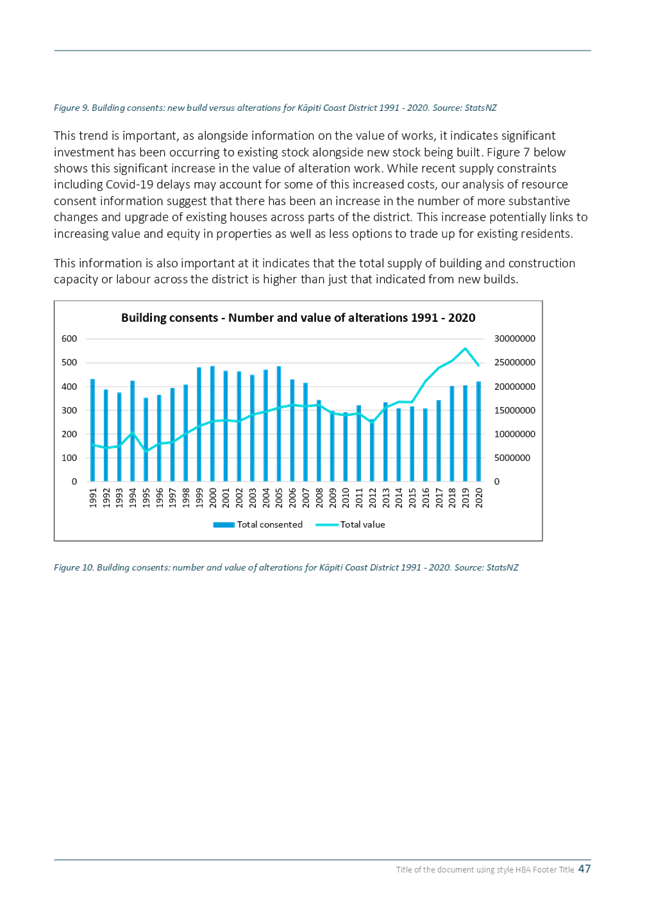
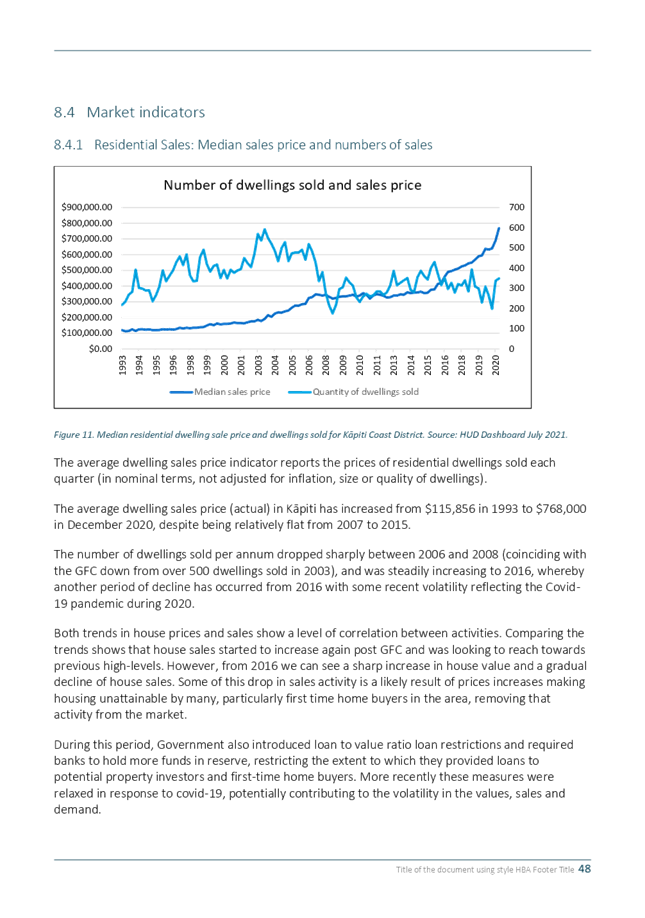
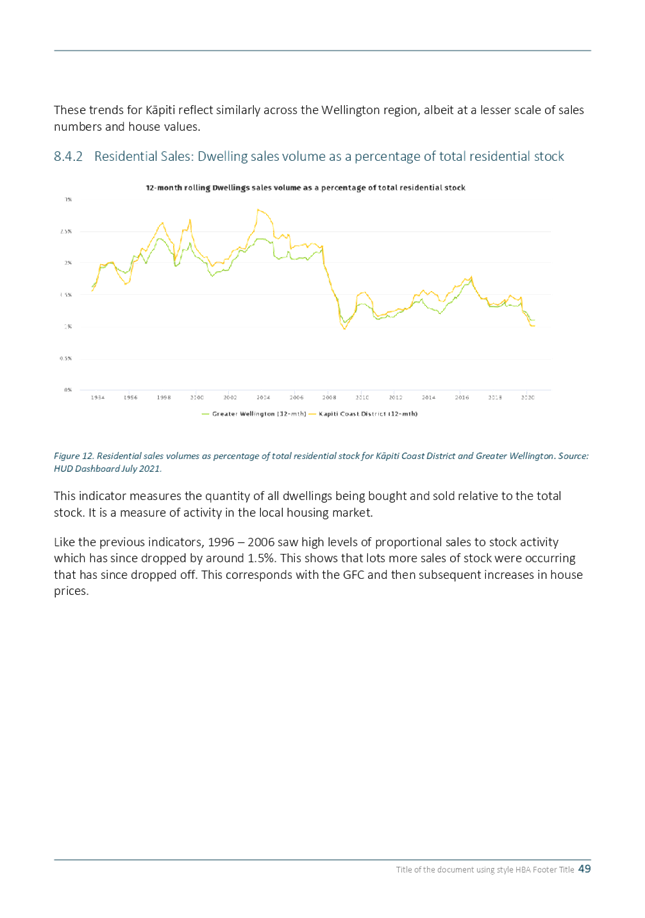

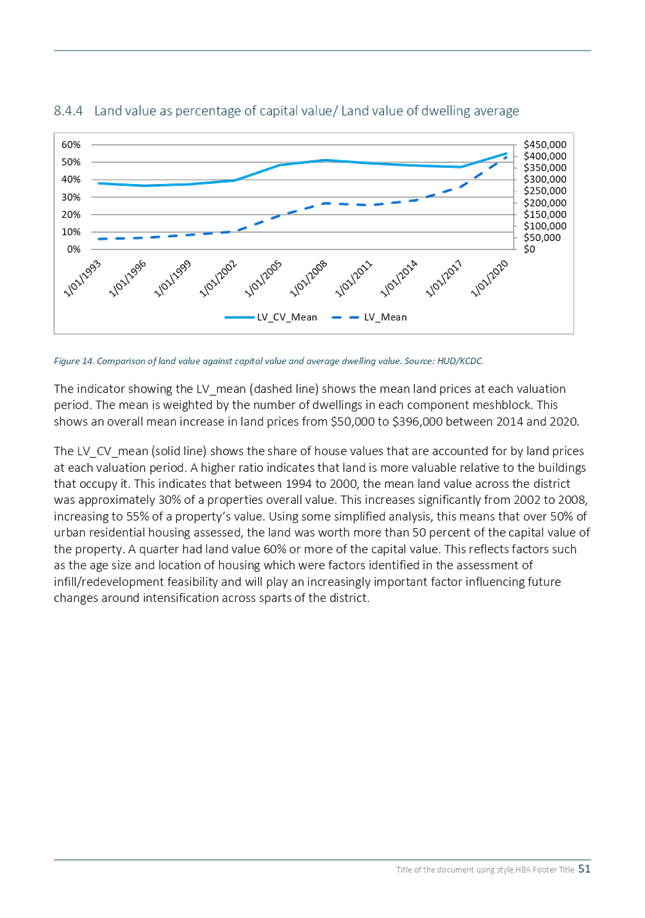
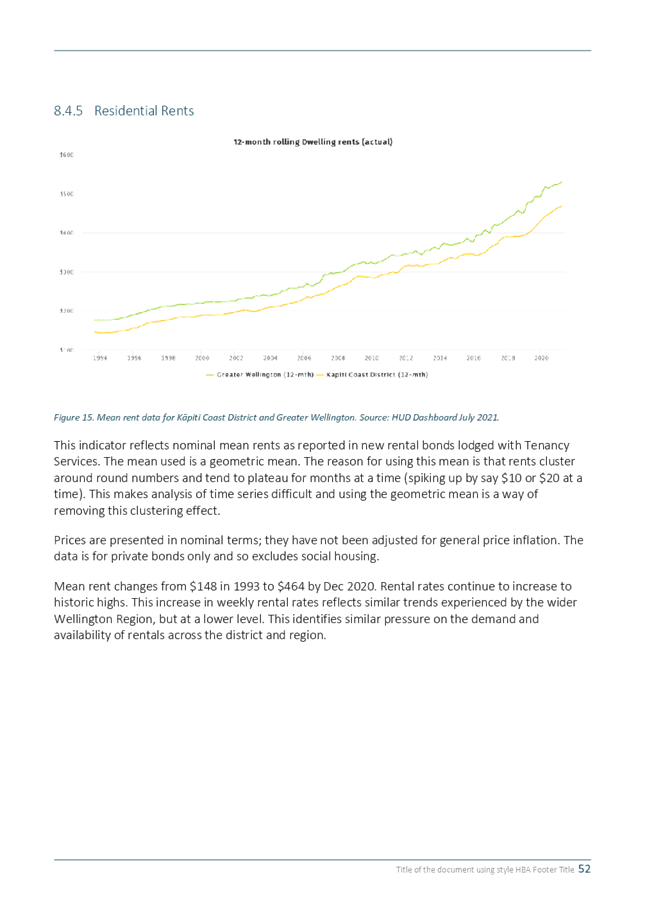
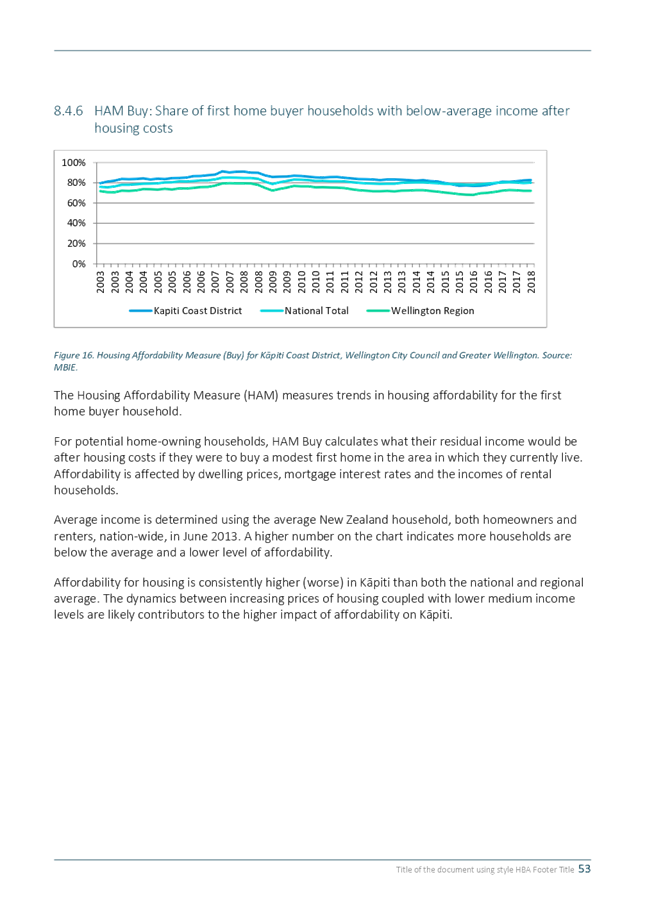
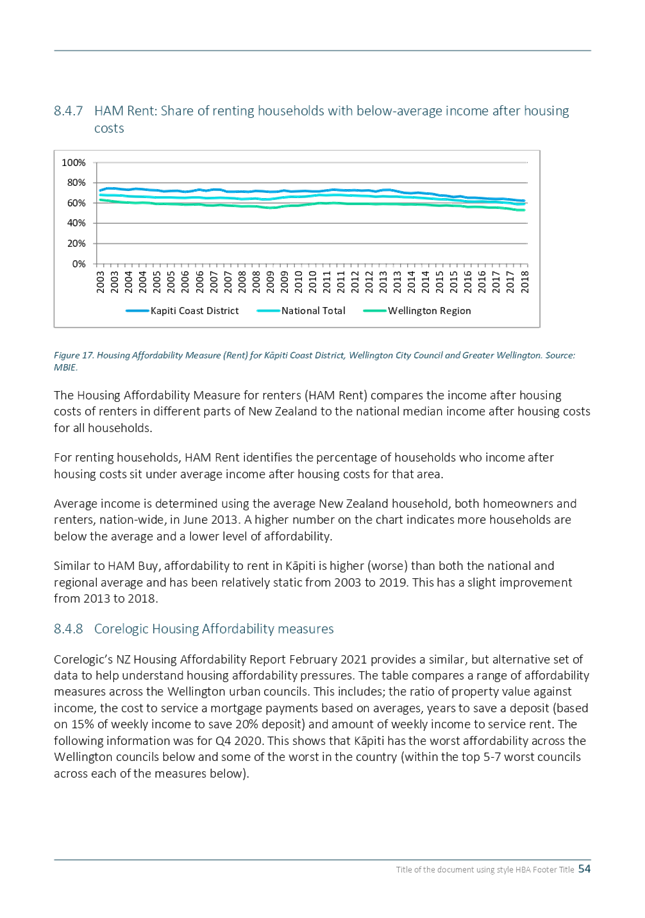
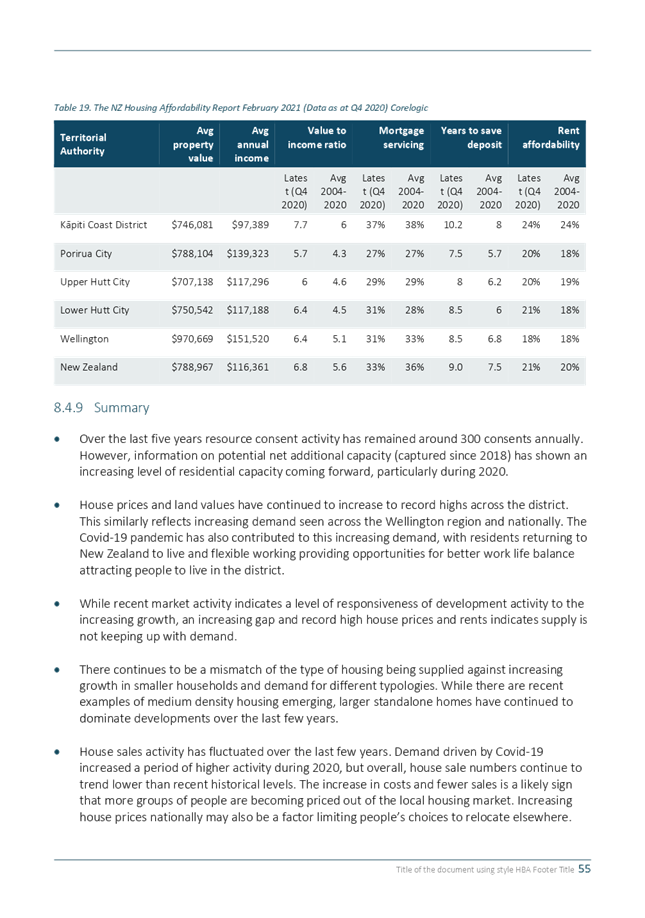
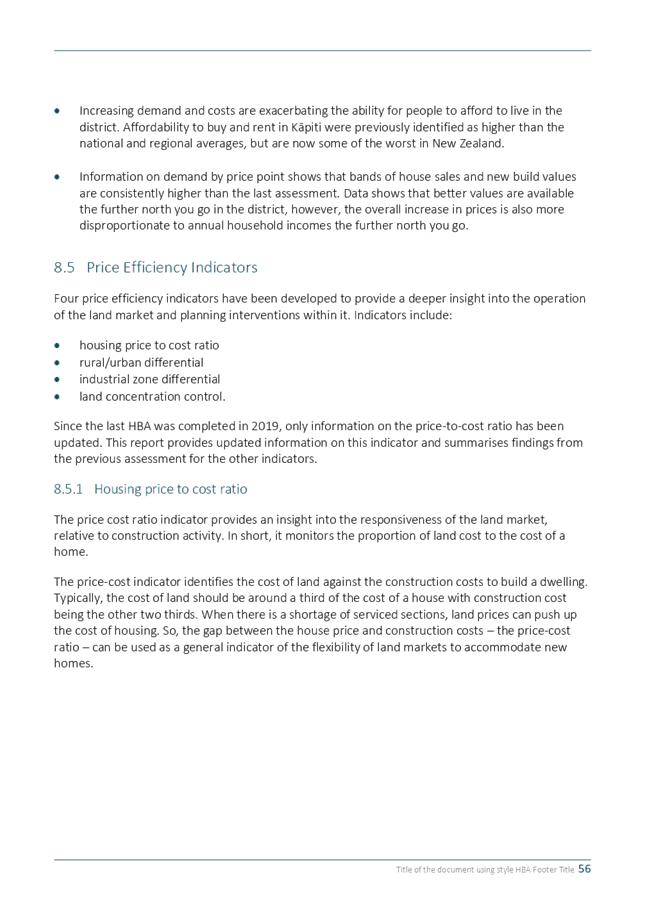
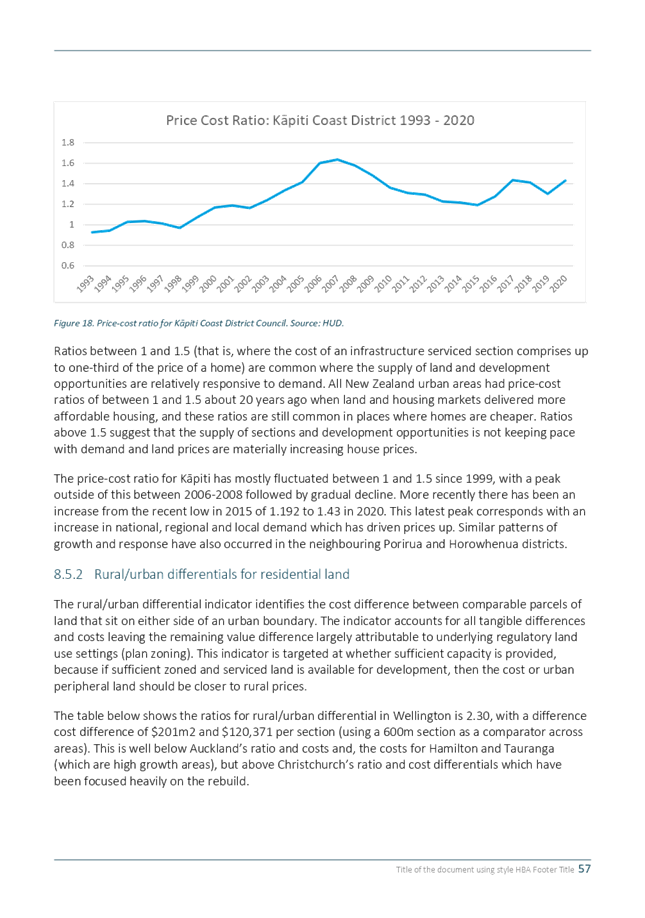
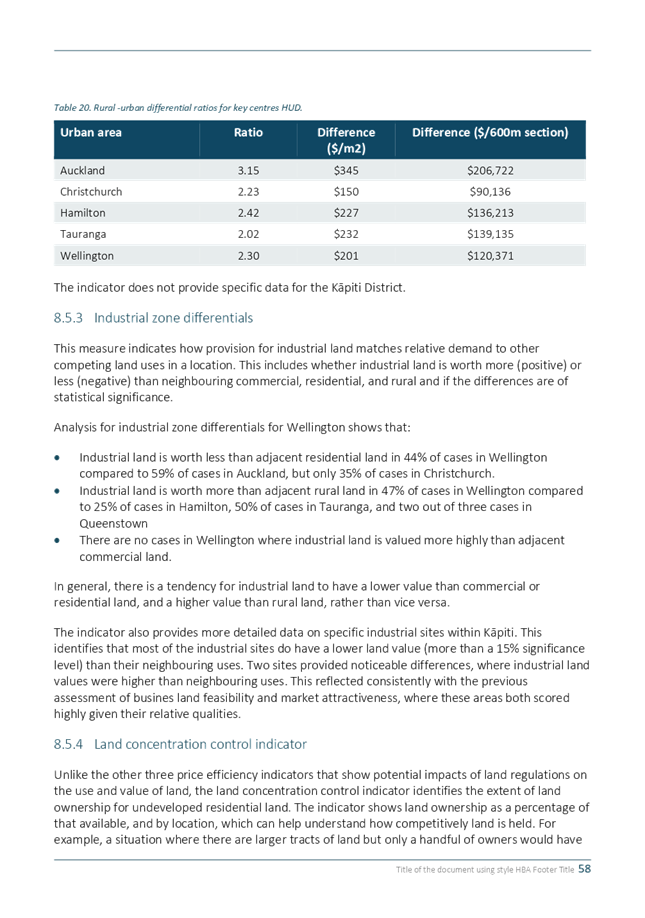
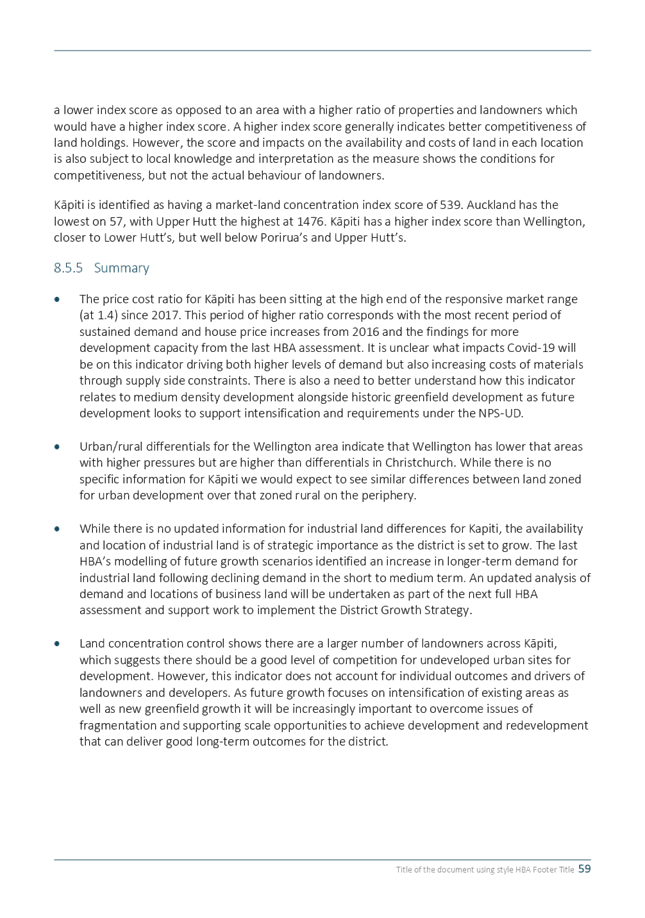


|
Council Meeting Agenda
|
7 April 2022
|

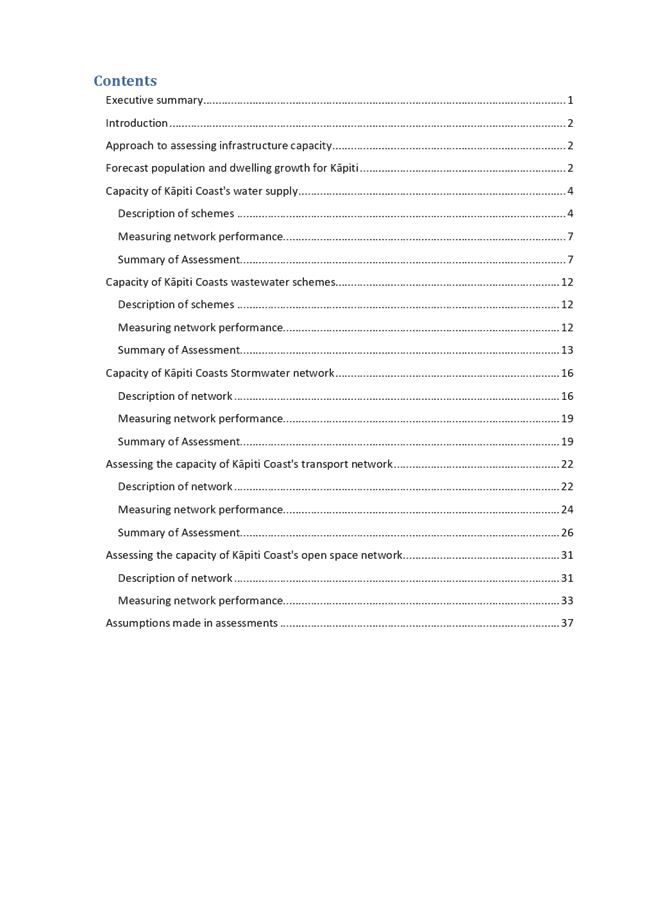
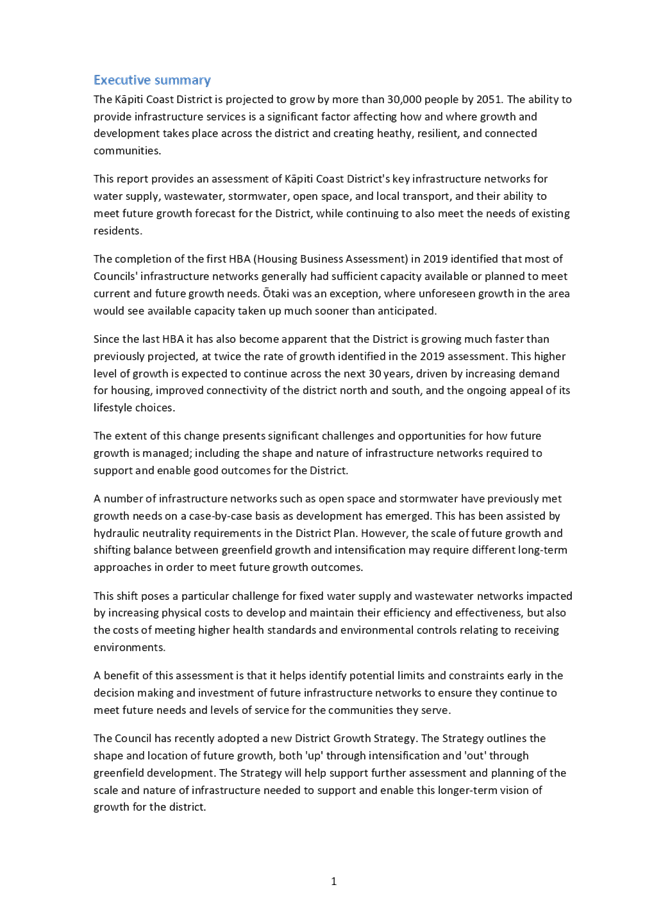
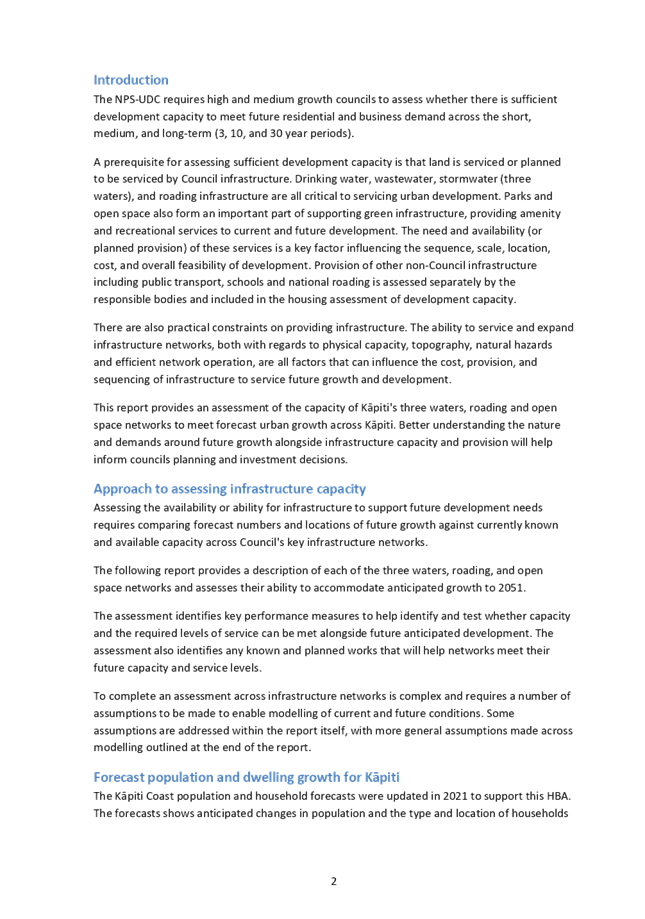
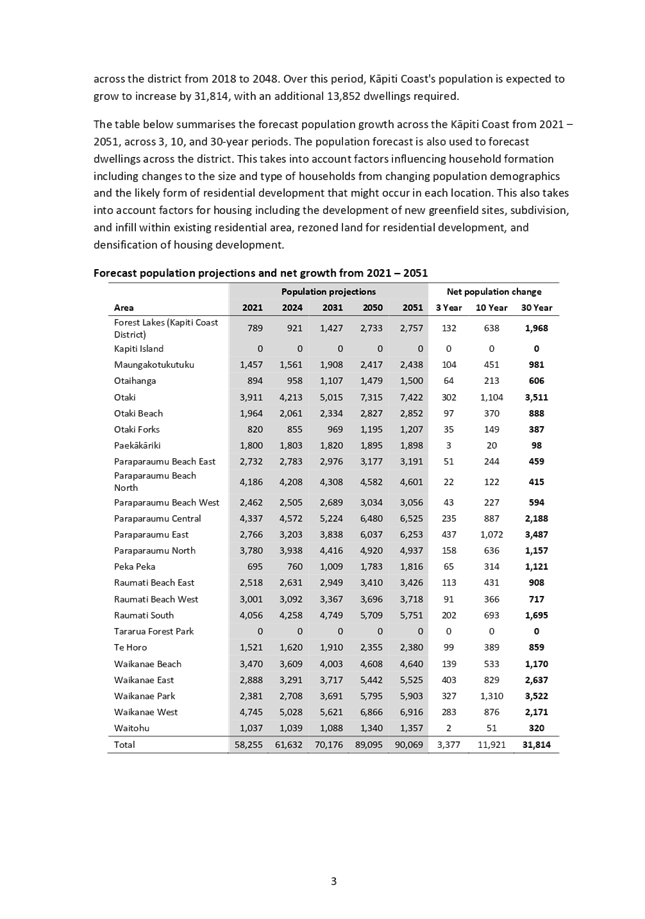
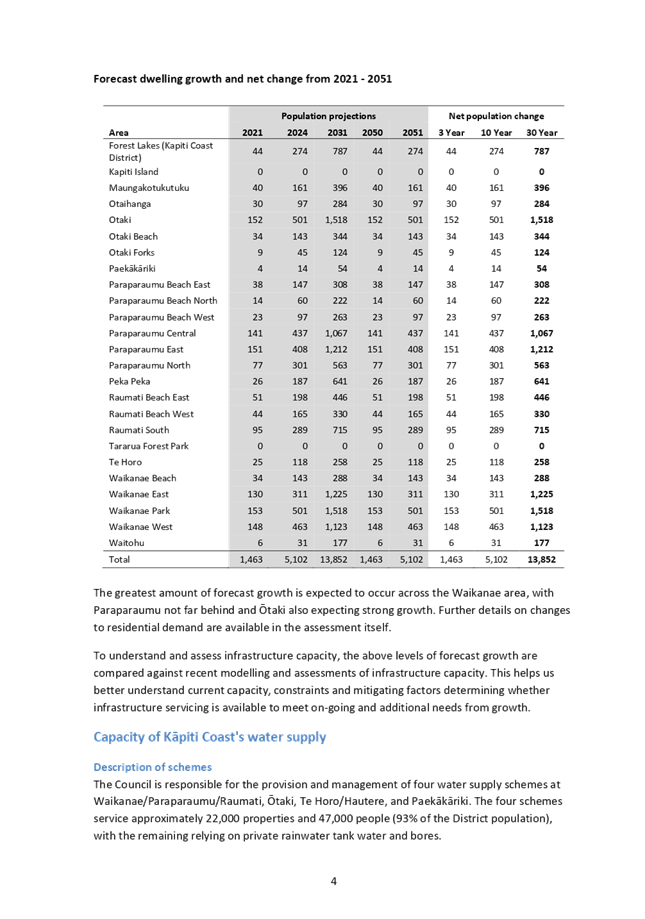
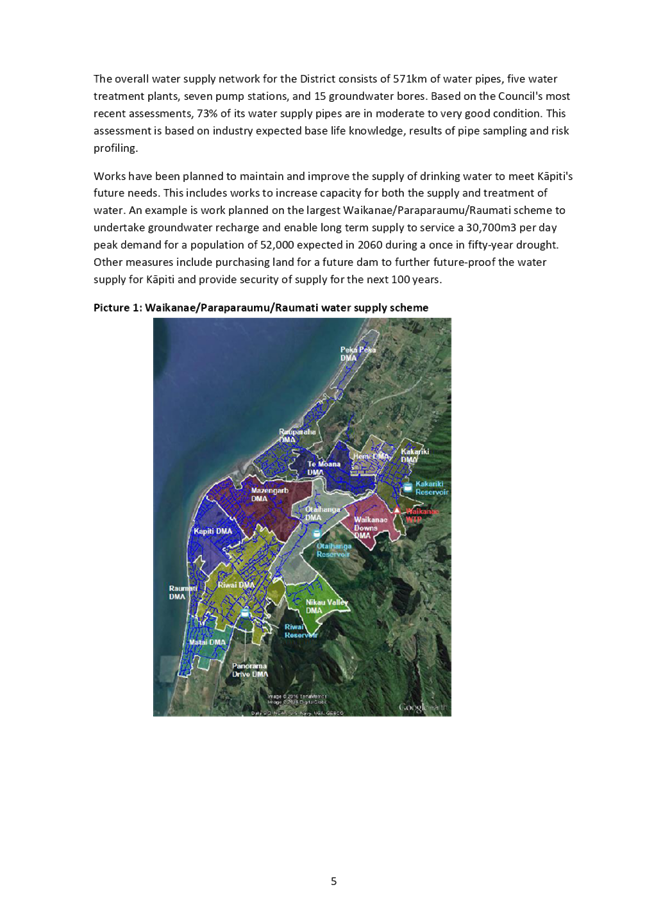
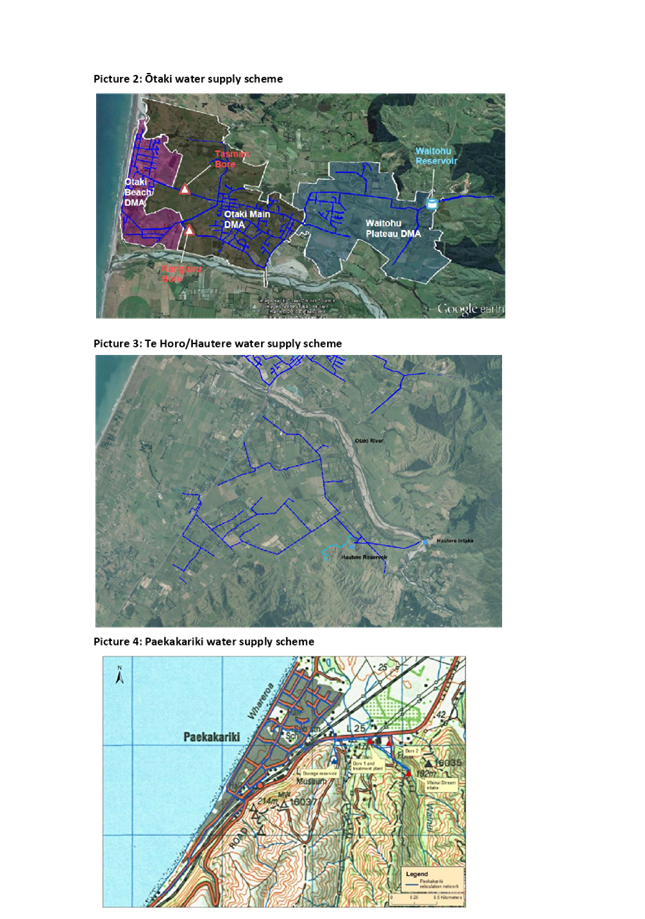
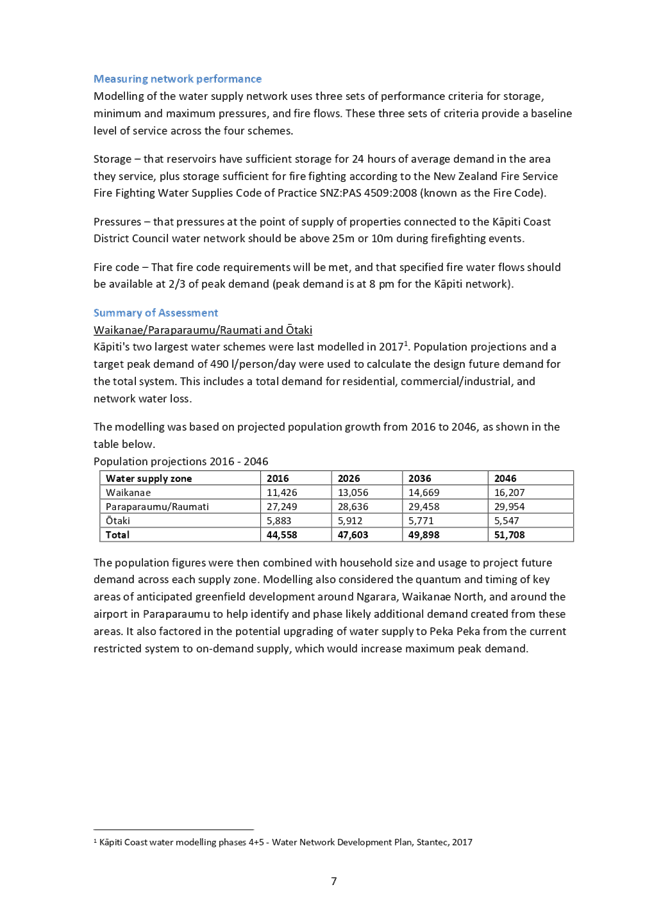
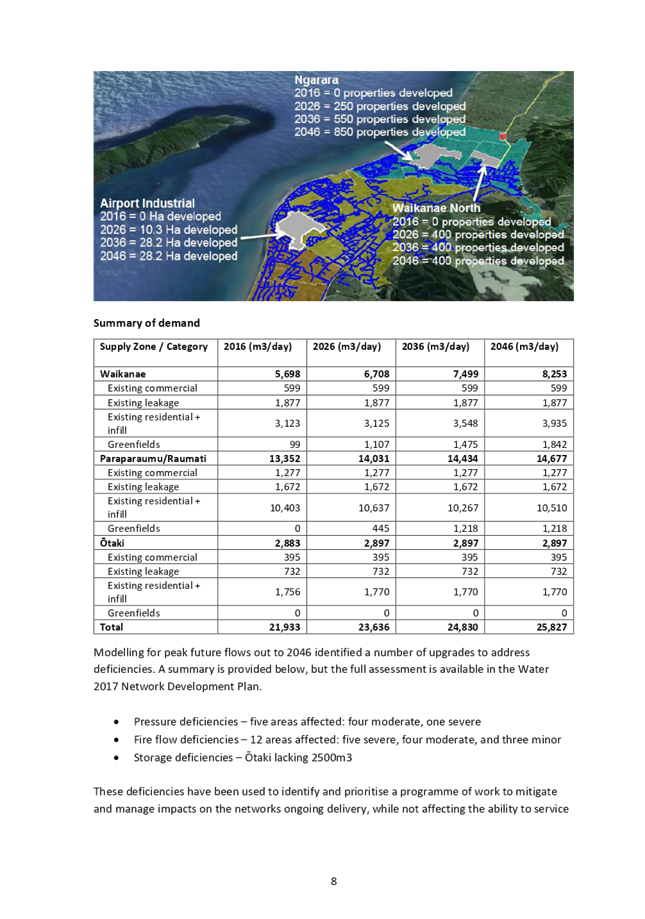

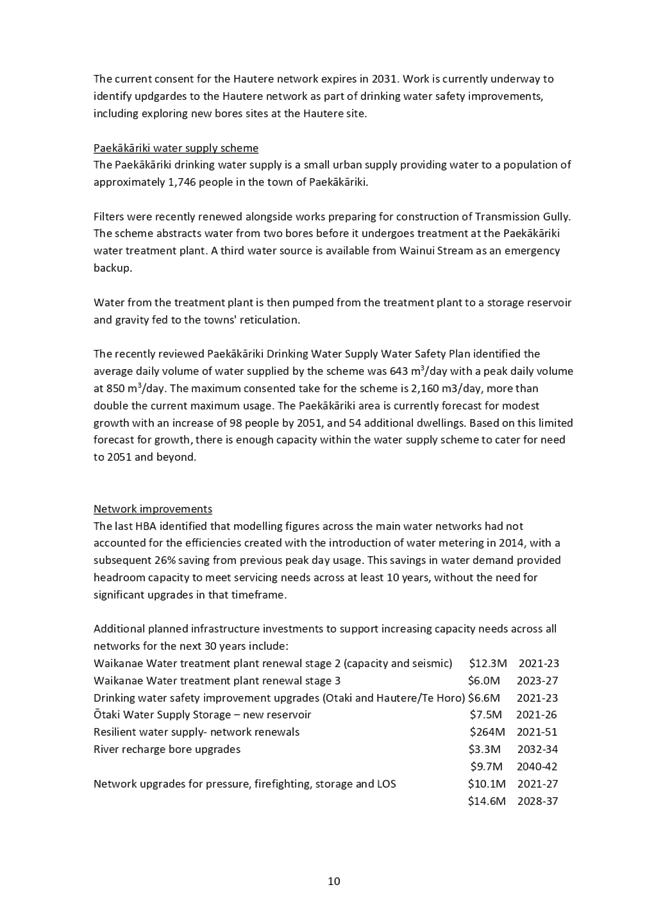
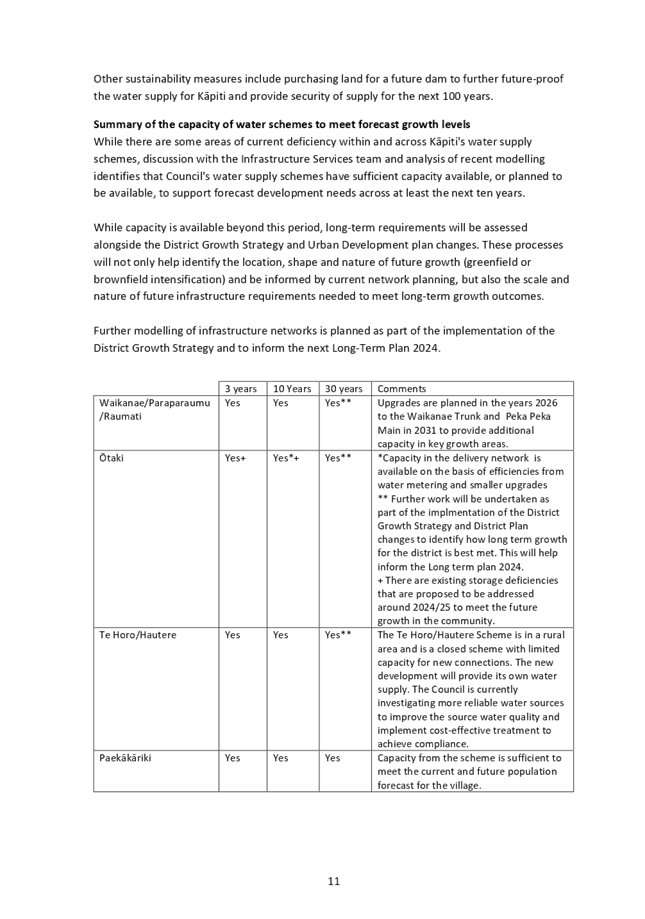
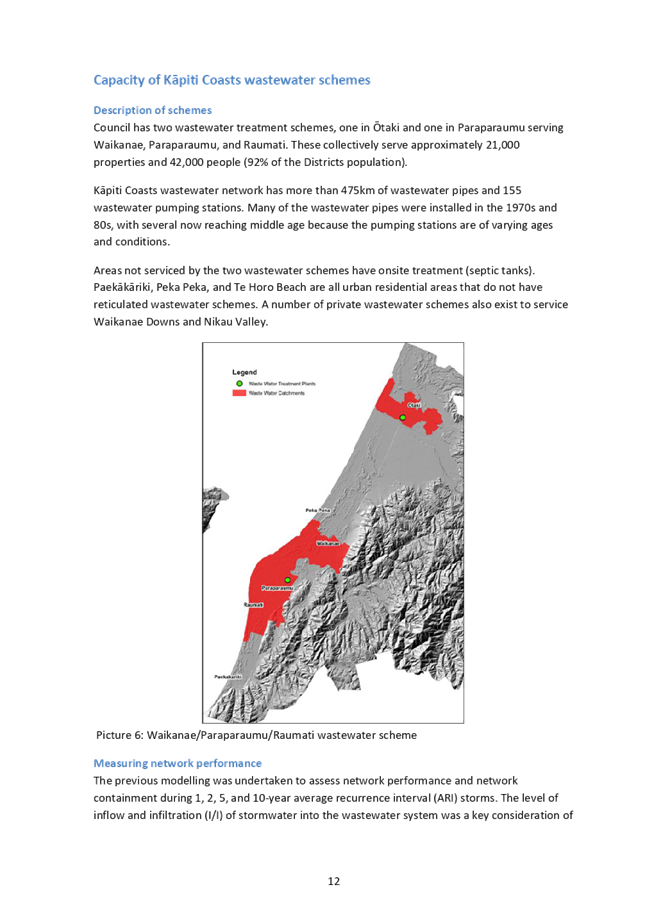

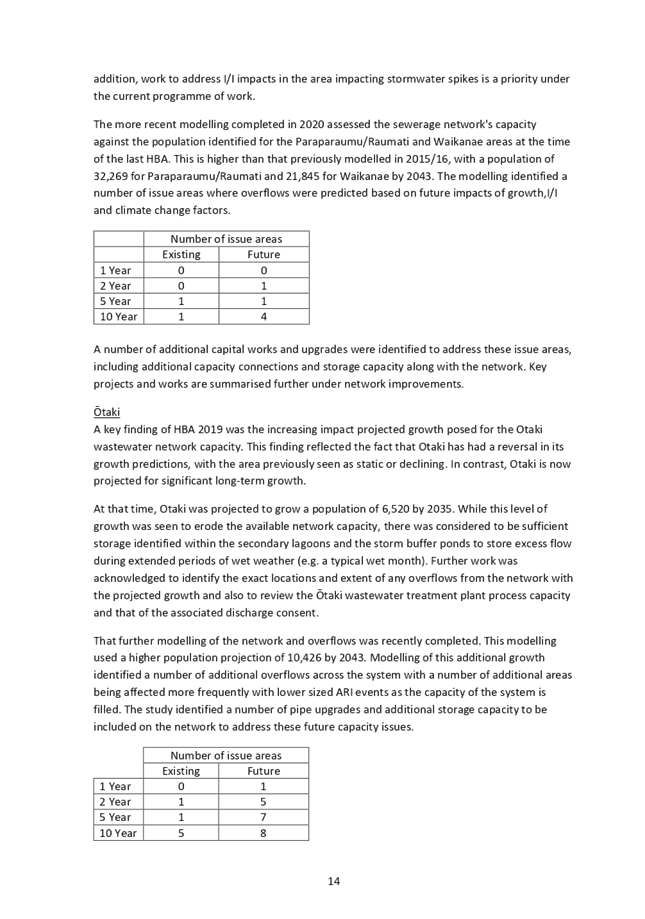


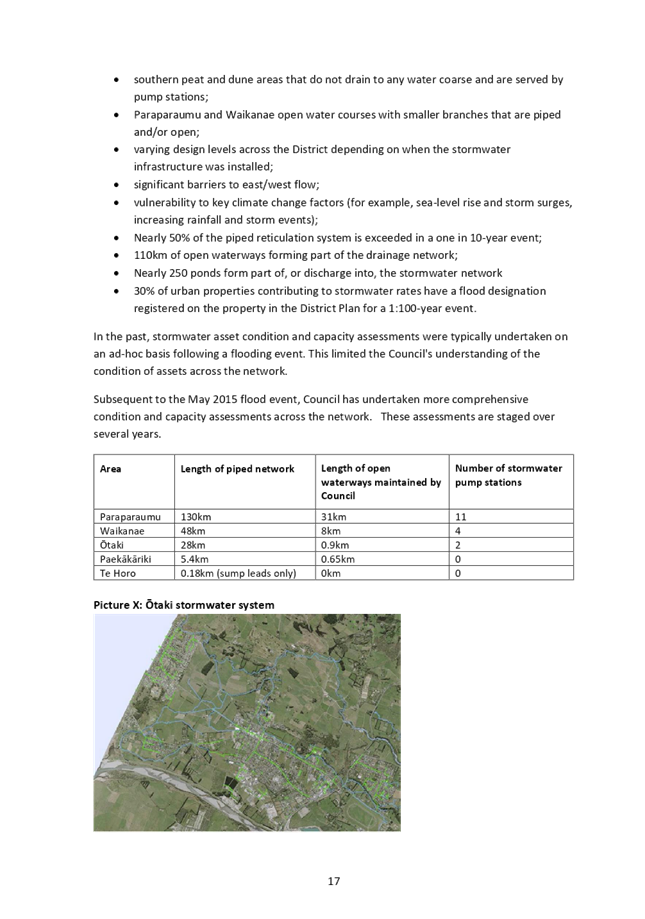
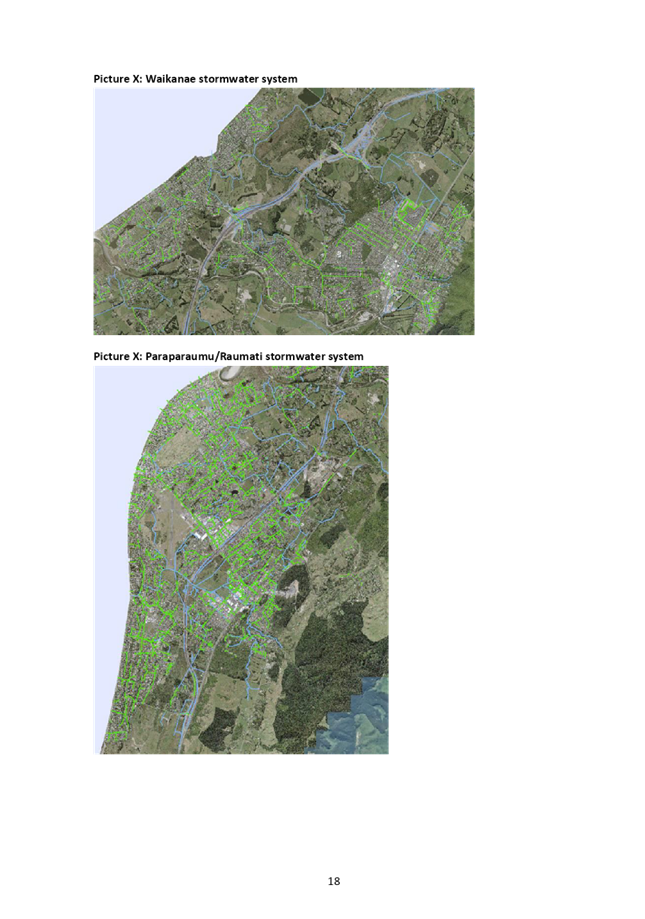
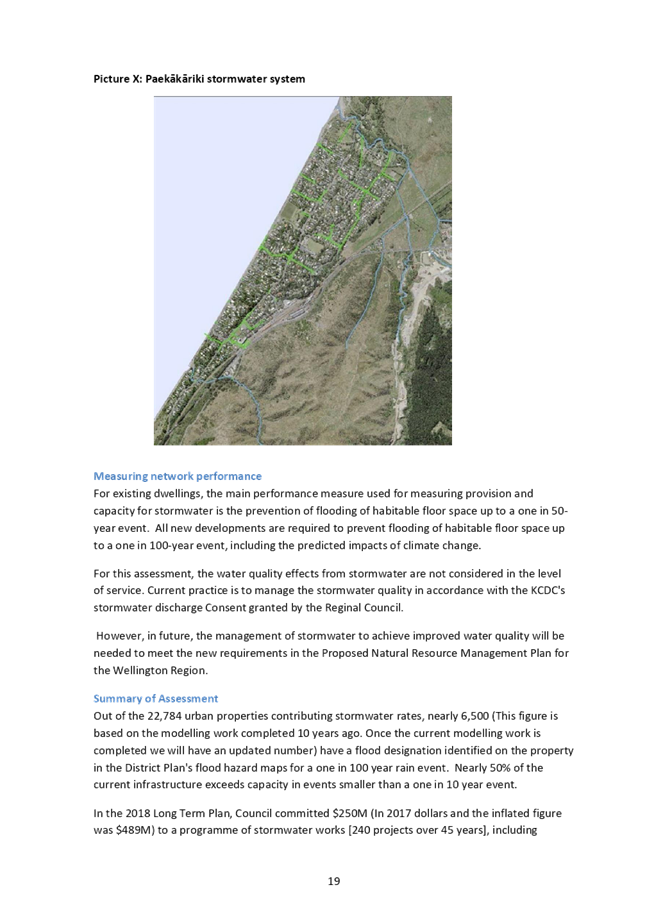
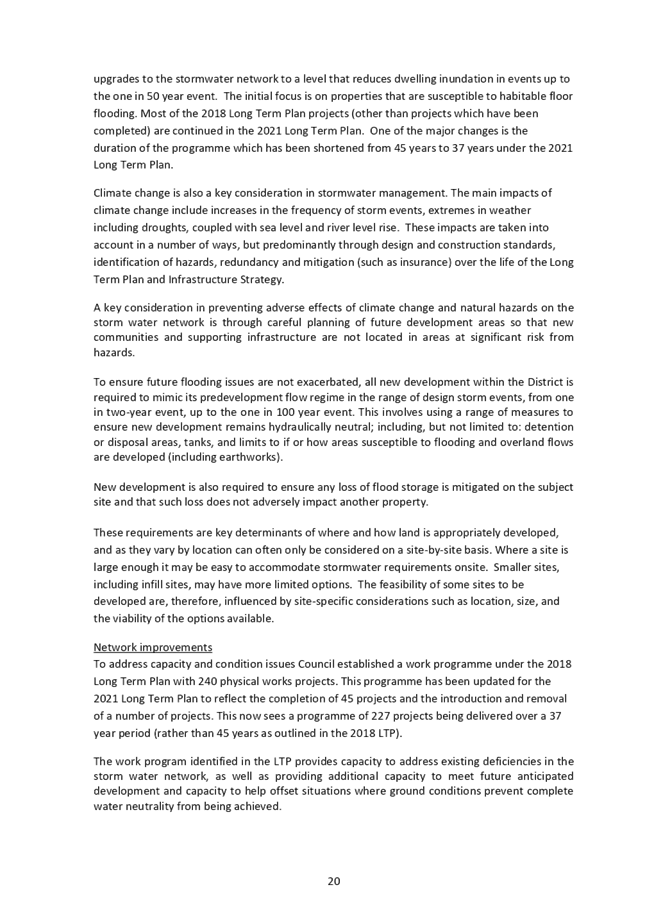
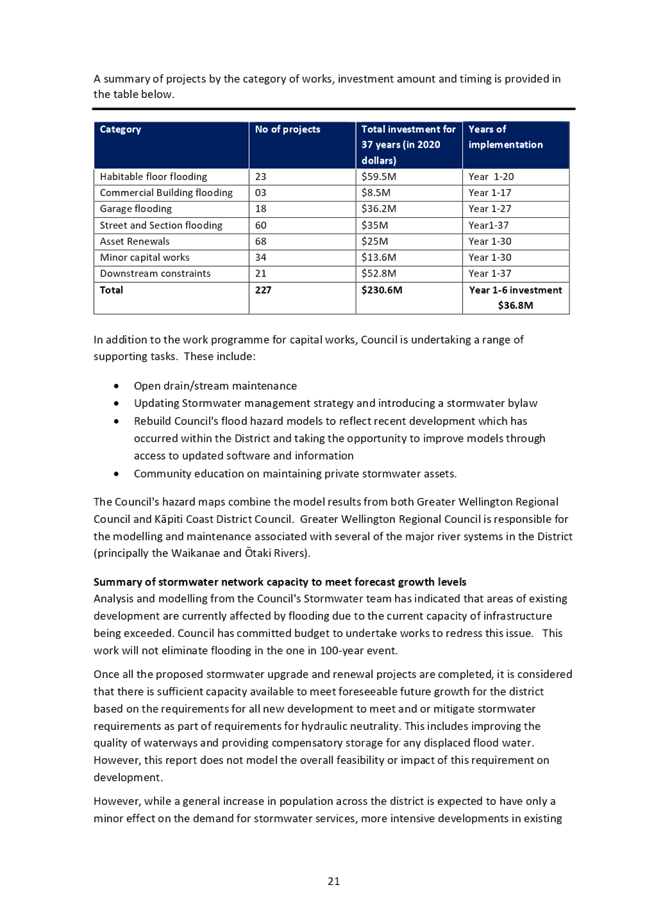
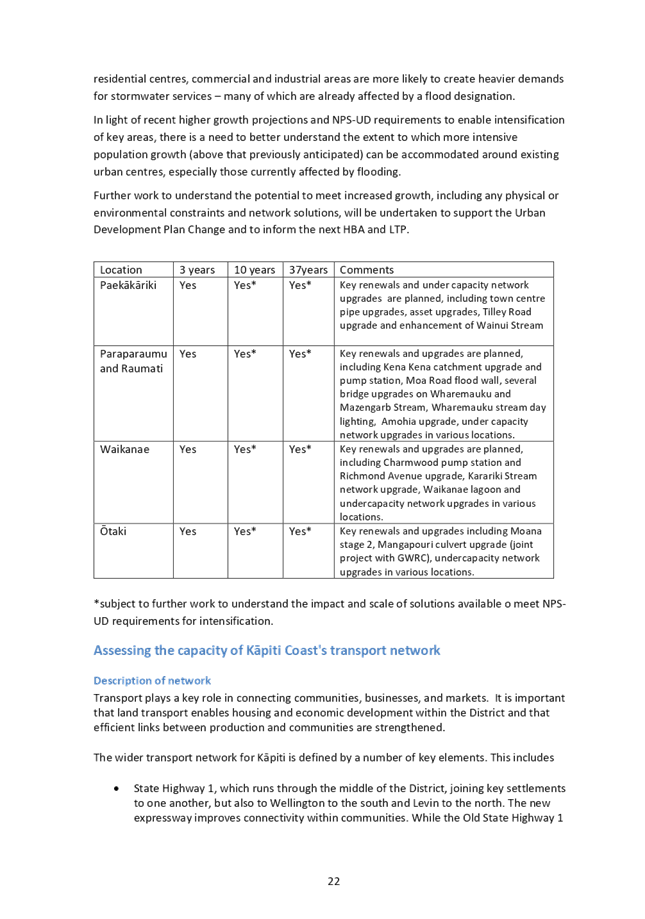

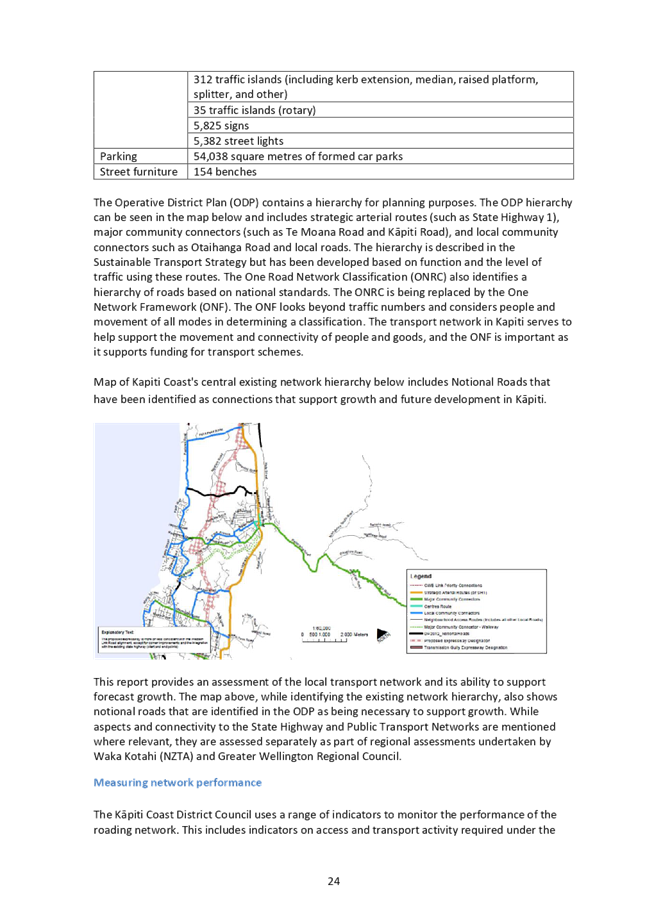
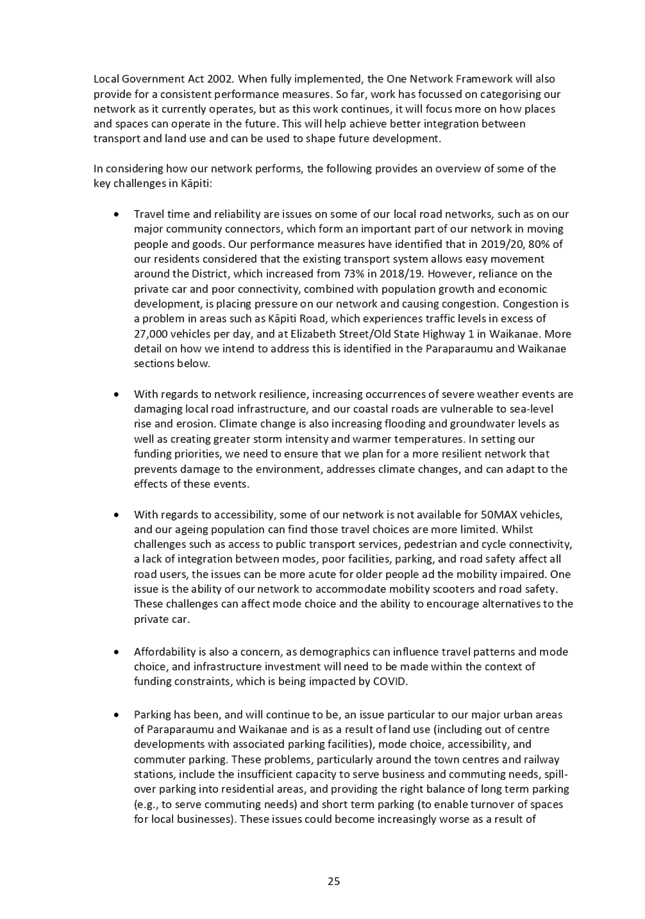

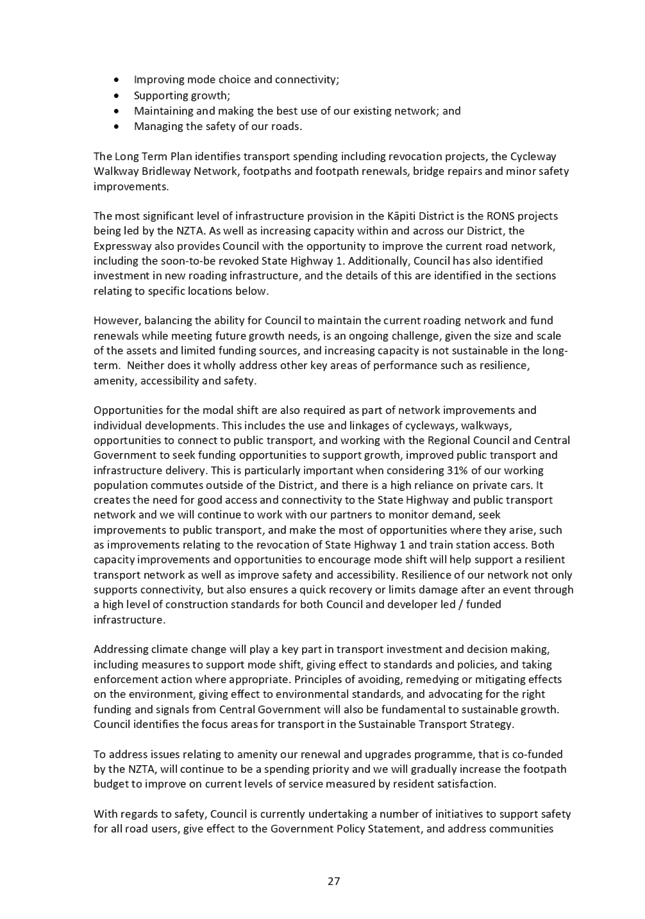
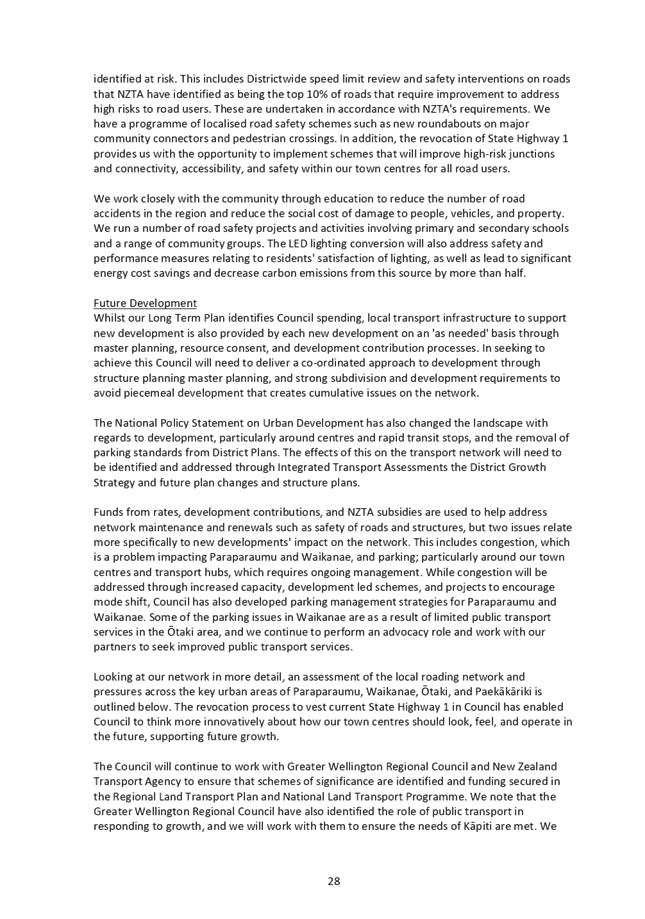
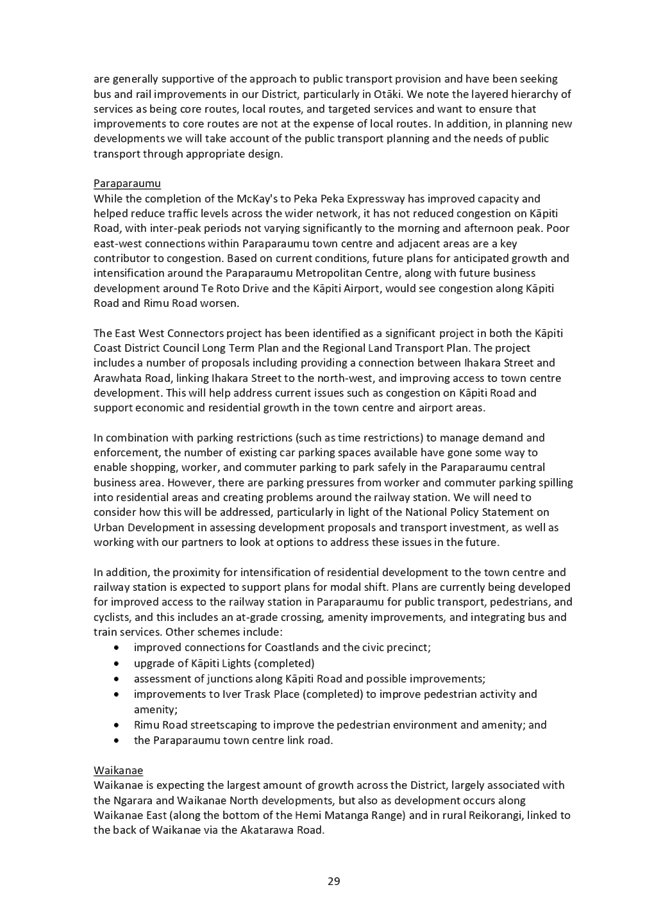

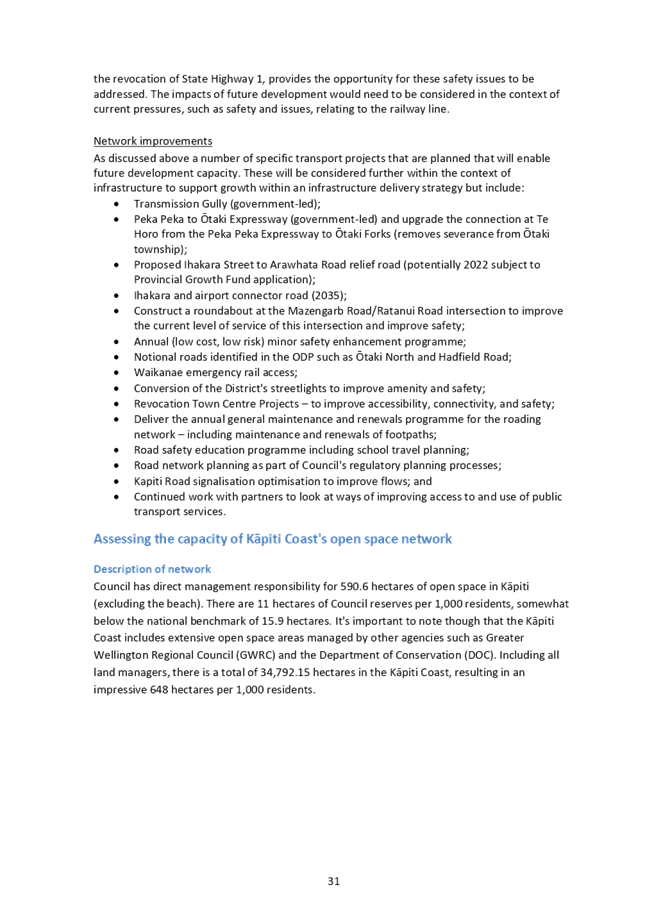
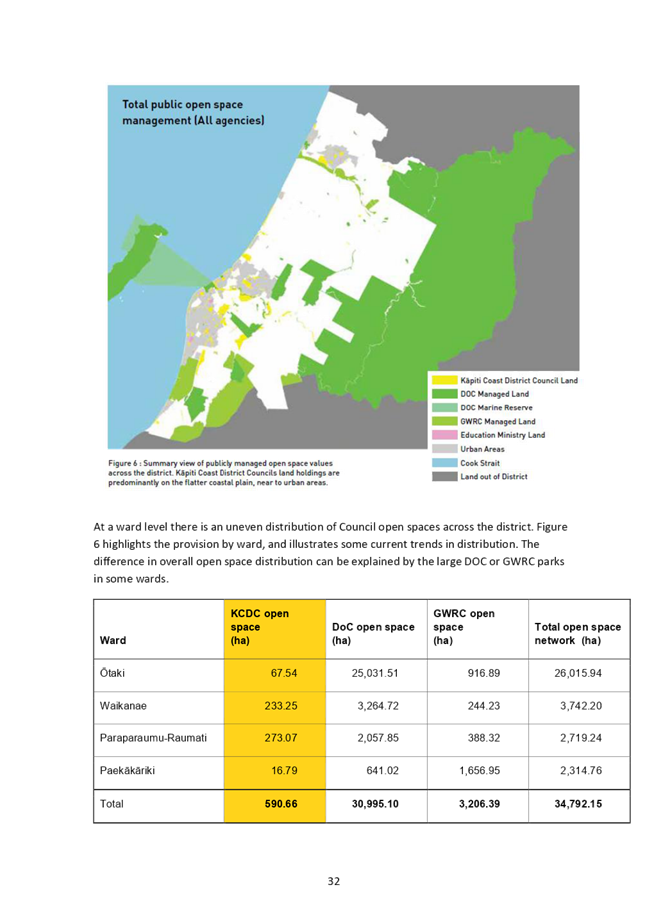
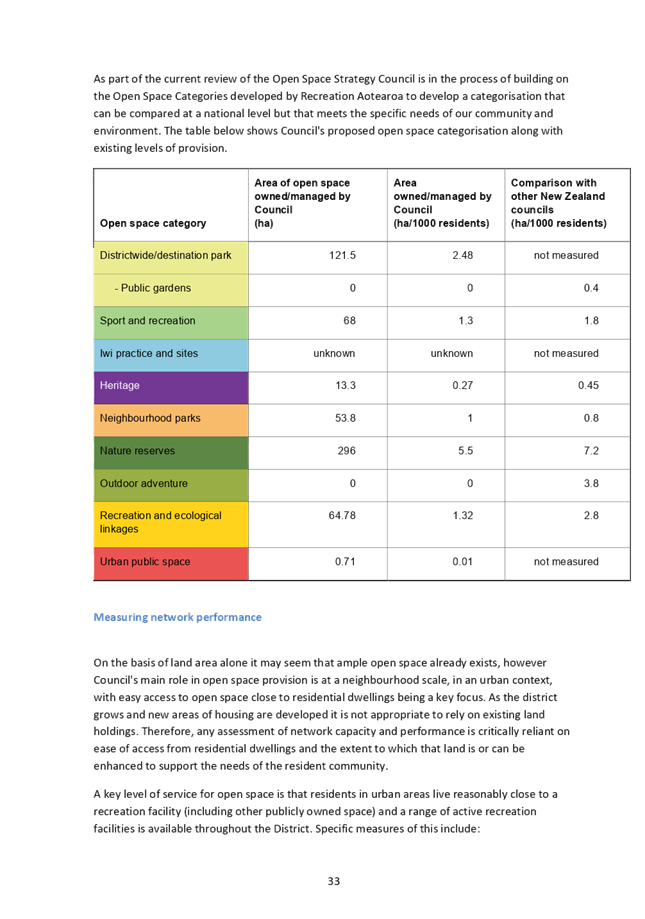
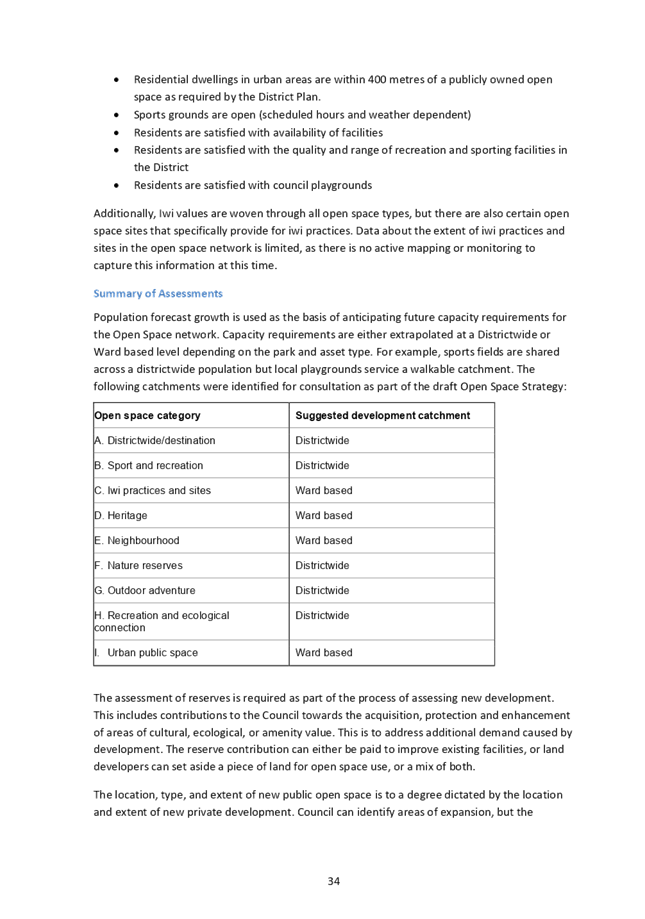
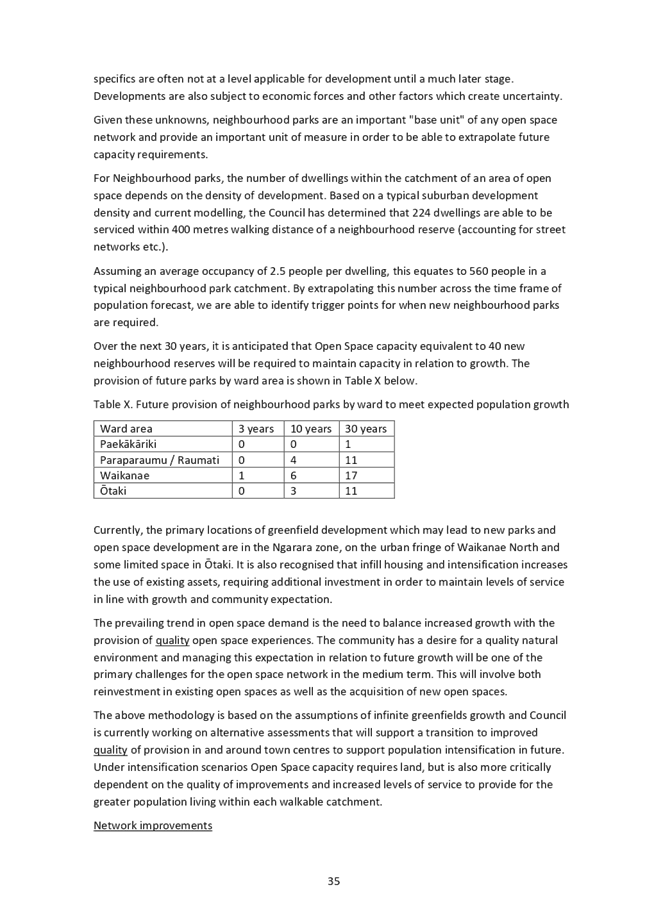
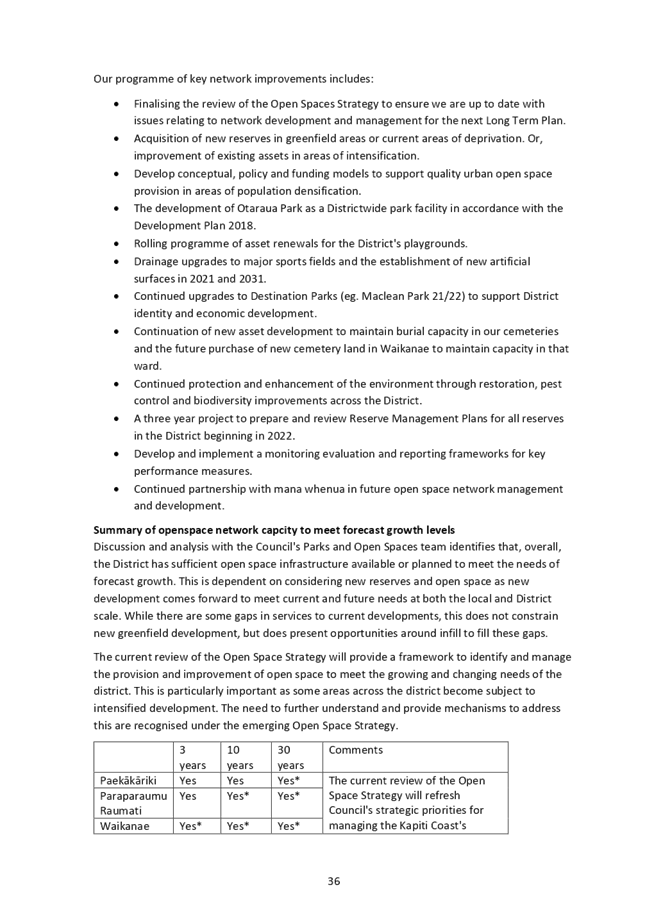
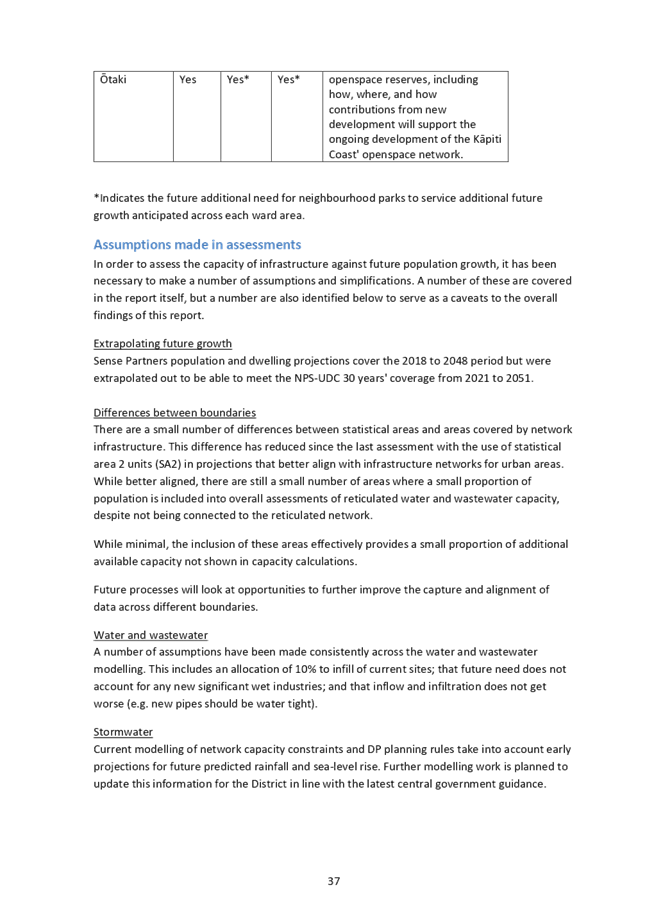
10.3 Social
Impact Grants 2022
Kaituhi |
Author: Andrea
Healy, Senior Advisor, Local Outcomes
Kaiwhakamana
| Authoriser: Janice McDougall, Group Manager People and
Partnerships
Te pūtake |
Purpose
1 This
report seeks a decision on funding for applications received to the Social
Impact Grants 2022.
He
whakarāpopoto | Executive summary
2 This
report provides the independent evaluation panels’ recommendations for
the Ōtaki Social Impact Grants of $50,000 and the districtwide Social
Impact Grants of $320,000, and seeks a decision on funding for applications
received to both funds.
Te tuku haepapa
| Delegation
3 Council
has delegated authority to consider this under section A.2 of the 2019-2022
Triennium Governance Structure and Delegations.
Taunakitanga | RECOMMENDATIONS
Social Impact Grants 2022 – Ōtaki
It is recommended that the Council:
A. Endorses
the recommendations of the Ōtaki Social Impact Grants evaluation panel.
B. Approves
funding totalling $42,340.00 to the following organisations:
B.1 $2,700.00
to Age Concern Kapiti Coast Incorporated
B.2 $9,640.00
Energise Ōtaki
B.3 $10,000.00
to Māoriland Charitable Trust
B.4 $10,000.00
to Ngā Hapū o Ōtaki
B.5 $10,000.00
to Te Puna Oranga o Ōtaki
C. Declines
the funding requests totalling $11,495.01 from the following organisations:
C.1 $1,551.01
from Ōtaki Montessori
C.2 $9,944.00
from Waka Kapiti
D. Approves
allocating the balance of $7,660.00 to Te Puna Oranga o Ōtaki to support
their immediate response to the COVID-19 pandemic.
Social Impact Grants 2022 – Districtwide
It is recommended that the Council:
E. Endorses
the recommendations of the districtwide Social Impact Grants evaluation panel.
F. Approves
funding totalling $320,000.00 to the following organisations:
F.1 $15,000.00
to Age Concern Kapiti Coast Incorporated
F.2 $15,000.00
to Dementia Wellington Charitable Trust
F.3 $14,810.00
to Energise Ōtaki
F.4 $11,000.00
to English Language Partners
F.5 $25,000.00
to Greater Wellington Neighbourhood Support
F.6 $2,310.34
to He Tangata Village
F.7 $15,000.00
to Kapiti Impact Trust
F.8 $20,000.00
to Kapiti Vaulting Club Incorporated
F.9 $10,354.00
to Kidz Need Dadz
F.10 $20,000.00
to KYS One Stop Shop Trust / Kapiti Youth Support
F.11 $20,000.00
to Manaaki Kapiti – Atiawa ki Whakarongotai
F.12 $15,000.00
to Māoriland Charitable Trust
F.13 $25,000.00
to Ngā Hapū o Ōtaki
F.14 $30,000.00
to Ōtaki Waka Hoe Charitable Trust
F.15 $20,000.00
to Paekākāriki Station Precinct Trust
F.16 $15,000.00
to Te Puna Oranga o Ōtaki
F.17 $21,525.66
to The Shed Project
F.18 $5,000.00
to Volunteer Kāpiti
F.19 $20,000.00
to Work Ready Kāpiti
G. Declines
the funding requests totalling $124,194.00 from the following organisations:
G.1 $30,000.00
from Kapiti Community Foodbank Incorporated
G.2 $28,300.00
from The Kapiti Seventh Day Adventist Group
G.3 $30,000.00
from Moraka Menstrual Cups
G.4 $27,444.00
from Waka Kapiti
G.5 $8,450.00
from The Wellington Multiple Sclerosis Society
H. Acknowledges
the significant contribution of the independent members on both the Ōtaki
and districtwide evaluation panels in assessing the applications.
Tūāpapa | Background
4 In
December 2017 Council adopted priorities and guiding principles to underpin the
Social Investment Programme which are included at Appendix 1.
5 In
2018 the Council introduced its Social Investment Programme to provide
financial support to community not-for-profit organisations. This shifted
historical non-contestable community contracts and grants to a contestable
investment programme based on priorities and achieving pre-set outcomes.
6 In
June 2018 Council resolved to allocate funding to the community organisations
included at Appendix 2. Social investment contracts were co-designed with
each organisation based on deliverables and milestones unique to their
initiative. The funding was for activity in 2018/19, 2019/20 and
2020/21. This is the last year of funding for this round.
7 In
response to the COVID-19 pandemic social investment contract holders, like many
other local providers, pivoted their day-to-day services to respond to COVID-19
and provide essential services to communities.
8 Recognising
this, contract holders were offered the opportunity to re-look at timelines and
deliverables, or repurpose their Year Two funding to support costs related to
business as usual. Where required Council staff worked alongside contract
holders to rework deliverables and put in place flexi-parameters, like
extensions. An update on the outcomes of the 2018-2021 social investment
contracts will be provided in May.
9 In
light of the pandemic and to ensure continued support to the community, the
Council agreed in December 2021 to implement a phased approach to social
investment by introducing an interim Social Impact Grants process. The
intention of the interim Social Impact Grants is to provide immediate, one-off
funding to support community work during the COVID-19 response. (This is
separate to the Social Investment Fund, which provides funding for a period of
three-years and will open for applications in April.)
10 Council
agreed to two separate pools of Social Impact Grant funding:
10.1 Districtwide:
$320,000 with an individual grant range of between $10,000 to $30,000; and
10.2 Ōtaki:
$50,000 with an individual grant range of between $5,000 and $10,000 to be
allocated specifically to initiatives that would benefit Ōtaki and address
equity issues. Organisations applying to this Ōtaki fund were also
eligible to apply to the districtwide fund.
11 Council
agreed to the establishment of an independent evaluation panel to assess
applications for Social Impact Grants and provide recommendations to Council on
funding allocations. This included the establishment of an Ōtaki
specific evaluation panel to provide recommendations to Council on the
Ōtaki fund.
12 This
report provides the independent evaluation panels’ recommendations for
the Ōtaki Social Impact Grants of $50,000 and the districtwide Social
Impact Grants of $320,000.
He
kōrerorero | Discussion
13 Applications
for Social Impact Grants opened on 10 December 2021 and closed on 23 February
2022. The application criteria, which was inspired by Council’s
Social Investment Programme, is included at Appendix 3.
14 Separate
evaluation panels met, via Zoom, for each grant. A panel of three met on
14 March to evaluate and make recommendations for the Ōtaki
Social Impact Grant, and a panel of five met on 16 March to evaluate and make
recommendations for the Districtwide Social Impact Grant.
15 The
independent members of the evaluation panels have a range of experience and
expertise which they contributed to assessing the applications, all are
Kāpiti residents and have worked professionally, and in their own time,
for different services, community and not-for-profit organisations locally and
nationally. A list of the independent members and brief biographies are
included at Appendix 4. Council staff provided secretariat support to the
evaluation panels.
16 Prior
to the evaluation panel meetings, the independent members were sent a list of
all applicants and a conflict-of-interest form with guidance about what
constitutes a potential conflict of interest (actual or perceived). At
the beginning of each meeting conflicts of interest were declared and recorded.
17 Each
member of the evaluation panel was allocated applicants to contact by phone
prior to the meeting to discuss the specifics of their project and ask any
questions they had.
18 Separate
panels were convened for each of the grants to ensure that decisions made for
one grant did not influence decisions in the other, i.e. that there was
equitable access to both grants by organisations.
Ōtaki social impact grants
He
take | Issues
19 In
total 7 organisations made applications to the Ōtaki
Social Impact Grant for $53,835.01 making the fund oversubscribed by
$3,835.01. A summary of all applications received is included at Appendix
5.
20 The
evaluation panel met via Zoom on Monday 14 March 2022 to discuss and assess the
applications and agree on the funding recommendations included in paragraphs 21
and 22 of this report. The evaluation criteria provided to the evaluation
panel is included at Appendix 6. As part of their assessment the
evaluation panel considered whether the service was going to be delivered to
Ōtaki specifically, and if the project delivered on the priorities and
emerging issues of the community and/or responded to the impact of COVID-19.
Ngā
kōwhiringa | Options
21 Following
their assessment of the 7 applications received, the evaluation panel
recommends that the following 5 organisations receive Social Impact Grants:
|
Organisation
|
Amount Requested
|
Amount Recommended
|
|
1. Age Concern Kapiti Coast
Incorporated
|
$2,700.00
|
$2,700.00
|
|
2. Energise Ōtaki
|
$9,640.00
|
$9,640.00
|
|
3. Māoriland Charitable
Trust
|
$10,000.00
|
$10,000.00
|
|
4. Ngā Hapū o
Ōtaki
|
$10,000.00
|
$10,000.00
|
|
5. Te Puna Oranga o
Ōtaki
|
$10,000.00
|
$10,000.00
|
|
Te
Puna Oranga o Ōtaki – balance remaining *
|
|
$7,660.00
|
|
TOTALS
|
$42,340.00
|
$50,000.00
|
* In
addition to the $10,000.00 they applied for, the evaluation panel recommends
allocating the balance remaining of $7,660.00 to Te Puna Oranga o Ōtaki to
deliver the COVID-19 manaaki response in Ōtaki.
22 The
evaluation panel recommends that the following 2 organisations do not receive
Social Impact Grants:
|
Organisation
|
Amount Requested
|
Amount Recommended
|
Reason
|
|
1. Ōtaki Montessori
|
$1,551.01
|
$0.00
|
Project does not meet fund
priorities
|
|
2. Waka Kapiti
|
$9,944.00
|
$0.00
|
Great initiative but commercial
venture
|
|
TOTALS
|
$11,495.01
|
$0.00
|
|
23 It
was agreed at the meeting that, if Council members agreed with the
recommendations, Council staff will:
23.1 work
with Ōtaki Montessori as their project may be eligible to apply for
funding to the Community Grants programme due to open from 7 April to 5 May,
23.2 work
with Waka Kapiti to help them navigate the process to get registered as a
charitable trust.
DISTRICTWIDE social impact grants
He
take | Issues
24 In
total 24 organisations applied for funding from the Districtwide Social Impact
Grant for a total of $547,668.34 making the fund oversubscribed by
$227,668.34. A summary of all applications received is included at
Appendix 7.
25 The
evaluation panel met via Zoom on Wednesday 16 March 2022 to discuss and assess
the applications and agree on the funding recommendations included in
paragraphs 26 and 27 of this report. The evaluation criteria provided to
the evaluation panel is included at Appendix 8.
Ngā
kōwhiringa | Options
26 Following
their assessment of the 24 applications received, the evaluation panel
recommends that the following 19 organisations receive Social Impact Grants:
|
Organisation
|
Amount Requested
|
Amount Recommended
|
|
1. Age Concern Kapiti Coast
Incorporated
|
$28,000.00
|
$15,000.00
|
|
2. Dementia Wellington
Charitable Trust
|
$30,000.00
|
$15,000.00
|
|
3. Energise Ōtaki
|
$14,810.00
|
$14,810.00
|
|
4. English Language Partners
|
$11,000.00
|
$11,000.00
|
|
5. Greater Wellington
Neighbourhood Support
|
$30,000.00
|
$25,000.00
|
|
6. He Tangata Village
|
$2,310.34
|
$2,310.34
|
|
7. Kapiti Impact Trust
|
$20,000.00
|
$15,000.00
|
|
8. Kapiti Vaulting Club
Incorporated
|
$30,000.00
|
$20,000.00
|
|
9. Kidz Need Dadz
|
$10,354.00
|
$10,354.00
|
|
10. KYS One Stop Shop Trust / Kapiti
Youth Support
|
$30,000.00
|
$20,000.00
|
|
11. Manaaki Kapiti – Atiawa ki
Whakarongotai
|
$20,000.00
|
$20,000.00
|
|
12. Māoriland Charitable Trust
|
$30,000.00
|
$15,000.00
|
|
13. Ngā Hapū o Ōtaki
|
$30,000.00
|
$25,000.00
|
|
14. Ōtaki Waka Hoe Charitable Trust
|
$30,000.00
|
$30,000.00
|
|
15. Paekākāriki Station
Precinct Trust
|
$25,000.00
|
$20,000.00
|
|
16. Te Puna Oranga o Ōtaki
|
$15,000.00
|
$15,000.00
|
|
17. The Shed Project
|
$22,000.00
|
$21,525.661
|
|
18. Volunteer Kāpiti
|
$15,000.00
|
$5,000.00
|
|
19. Work Ready Kāpiti
|
$30,000.00
|
$20,000.00
|
|
TOTALS
|
$423,474.34
|
$320,000.00
|
27 The
evaluation panel recommends that the following 5 organisations do not receive
Social Impact Grants:
|
Organisation
|
Amount Requested
|
Amount Recommended
|
Reason
|
|
1. Kapiti Community Foodbank
|
$30,000.00
|
$0.00
|
Deemed business as usual
|
|
2. The Kapiti Seventh Day
Adventist Group
|
$28,300.00
|
$0.00
|
Concerns regarding
religious recruitment / proselytising
|
|
3. Moraka Menstrual Cups
|
$30,000.00
|
$0.00
|
Tauranga-based business
– couldn’t confirm links to local groups
|
|
4. Waka Kapiti
|
$27,444.00
|
$0.00
|
Great initiative but
commercial venture
|
|
5. The Wellington Multiple
Sclerosis Society
|
$8,450.00
|
$0.00
|
Deemed business as usual
|
|
TOTALS
|
$124,194.00
|
$0.00
|
|
Tangata whenua
28 The
social investment fund is outcomes-based and put iwi prosperity and iwi
aspirations at the fore, as key principles for improving social outcomes that
contributed to community wellbeing.
29 The
funding model also embeds an equity framework that reinforces the tiriti
principle of tino rangatiratanga (iwi-led initiatives to achieve iwi
aspirations) to facilitate Māori whakairo (Māori thinking and
understanding) to enhance outcomes.
Panonitanga āhuarangi | Climate change
30 One
of the social investment principles guiding investment in positive social
impacts is:
Sustainability -
organisations and initiatives encourage innovation and work towards becoming
sustainable in all respects, including environmentally.
Ahumoni me ngā rawa | Financial
and resourcing
31 A
total of $395,000 is available through the social investment fund. This
is made up of:
31.1 An
annual amount of $345,000 assigned to the Community Support Activity;
31.2 A
new allocation of $50,000 per annum for Ōtaki place-based initiatives,
acquired through Council’s Long Term Plan 2021-41.
32 It
is important to note that in September 2021 Council resolved to make a one-off
grant to the Kāpiti Community Foodbank to support their relocation
project. Through this process $25,000 was repurposed from the social
investment fund reducing the social investment fund from $395,000 to $370,000
for this year.
Ture me ngā Tūraru | Legal
and risk
33 Some
decision makers will be closely connected to organisations who have made
applications. If elected members have a conflict they should abstain from
voting or participating in the debate at the Council Meeting.
Ngā pānga ki ngā kaupapa here | Policy impact
34 This
matter has a low level of significance under Council’s Significant and
Engagement Policy.
Te whakawhiti
kōrero me te tūhono | Communications & engagement
Te mahere tūhono | Engagement
planning
35 An
engagement plan is not needed to implement this decision as it builds on
engagement undertaken in 2017 to development the Social Investment programme.
Whakatairanga |
Publicity
36 A
communications plan has been developed to inform the community and key
stakeholders of Council’s decision. This will include using media
and digital channels.
Ngā āpitihanga | Attachments
1. Social
Investment Priorities and Principles ⇩ 
2. Organisations
allocated Social Investment Funding 2018-2021 ⇩ 
3. Fund
Criteria ⇩ 
4. Evaluation
Panels ⇩ 
5. Applications
Received - Ōtaki ⇩ 
6. Evaluation
Criteria - Ōtaki ⇩ 
7. Applications
Received - Districtwide ⇩ 
8. Evaluation
Criteria - Districtwide ⇩ 
|
Council
Meeting Agenda
|
7 April 2022
|
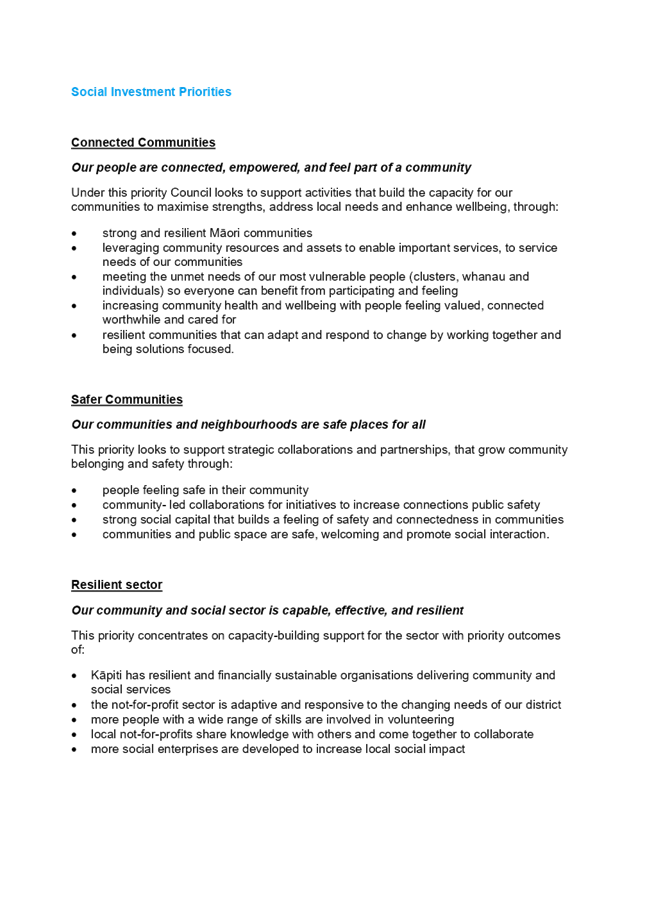
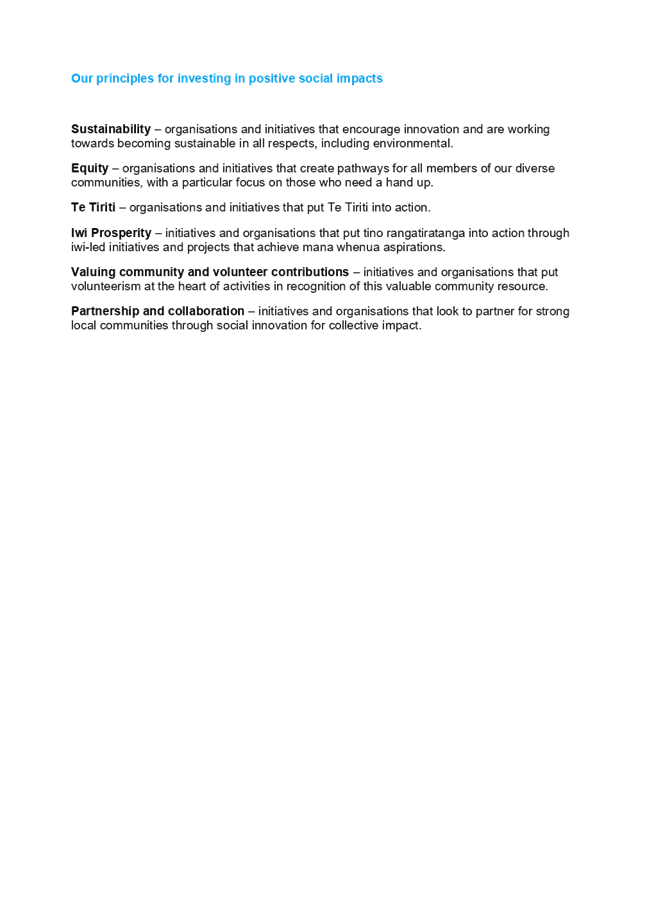
|
Council Meeting Agenda
|
7 April 2022
|

|
Council
Meeting Agenda
|
7 April 2022
|
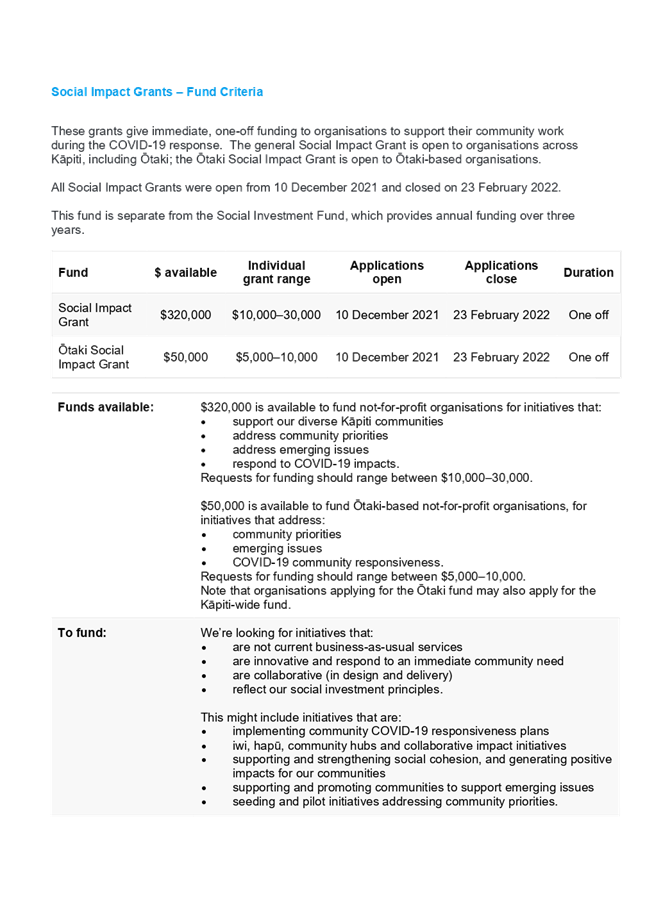
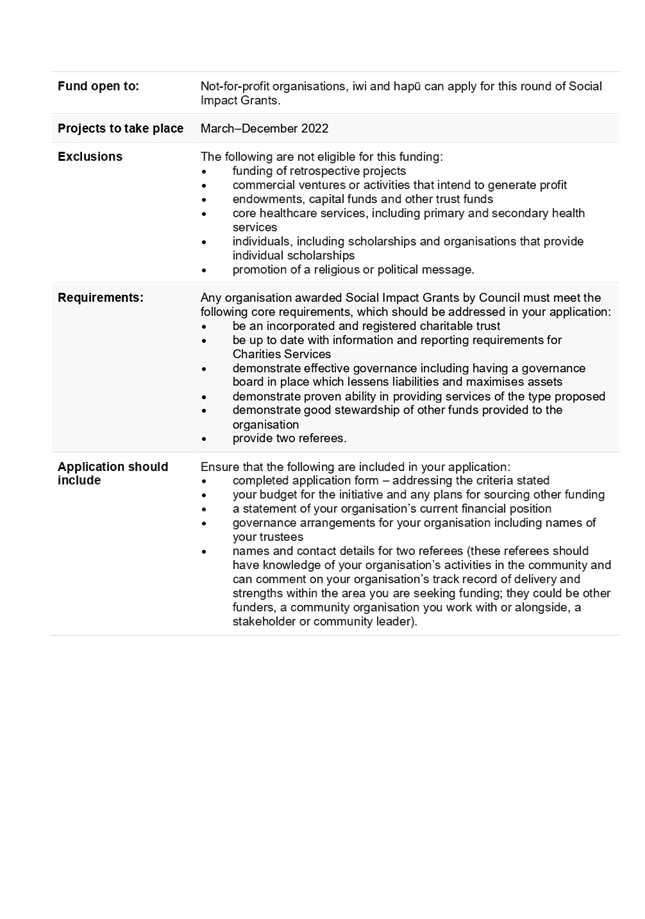
|
Council Meeting Agenda
|
7 April 2022
|
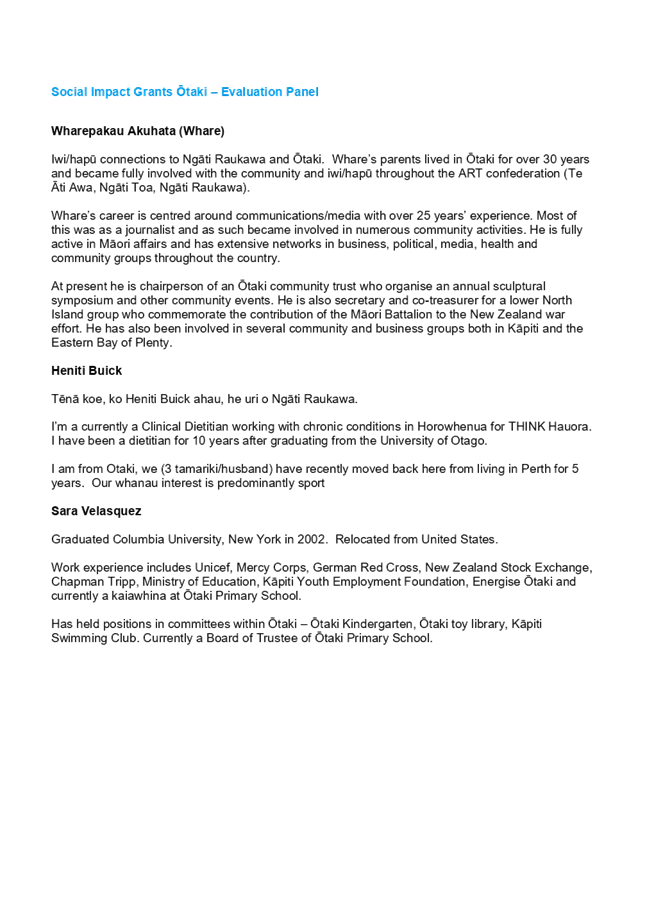
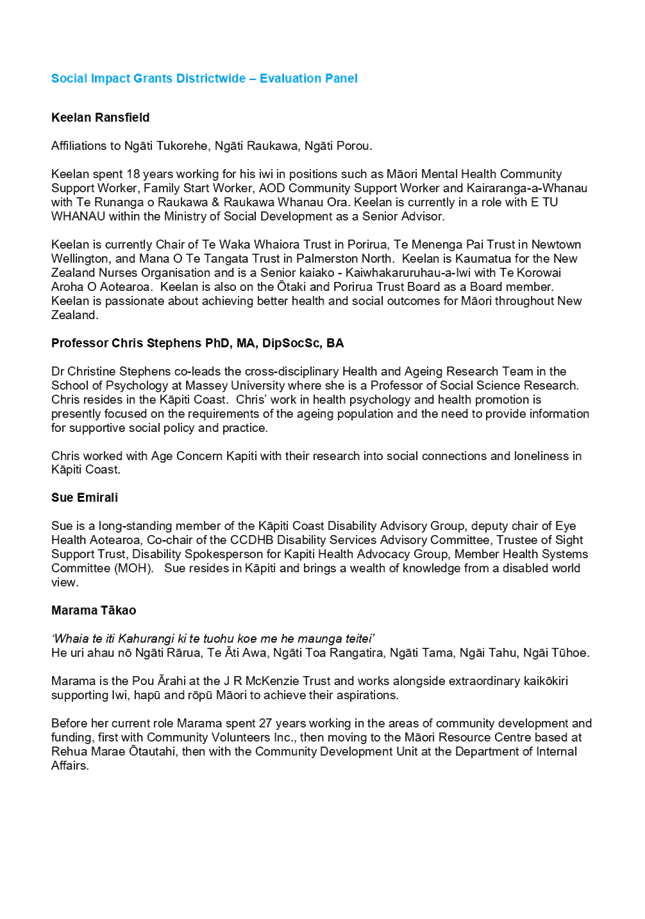

|
Council Meeting Agenda
|
7 April 2022
|

|
Council
Meeting Agenda
|
7 April 2022
|
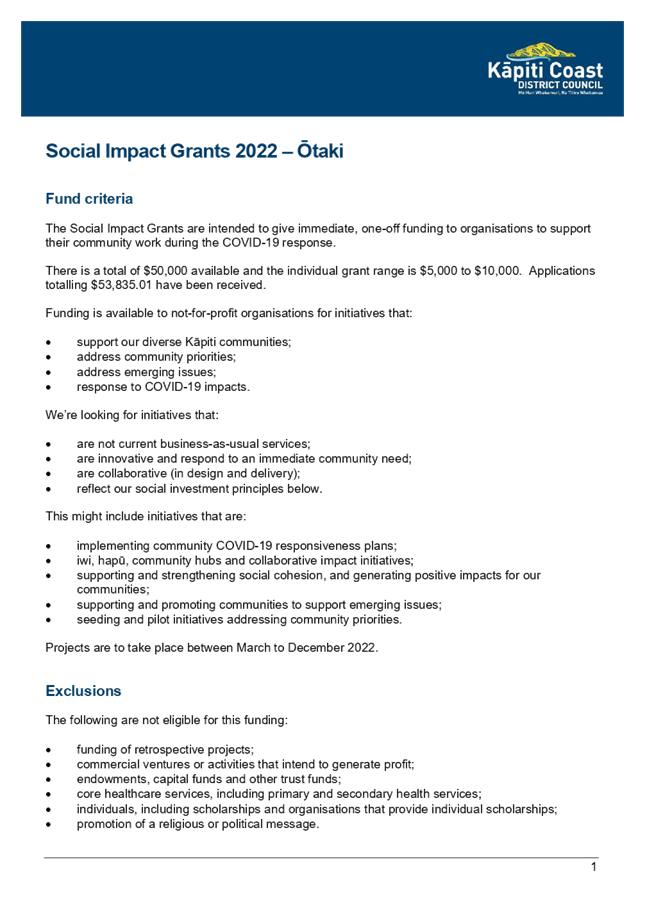
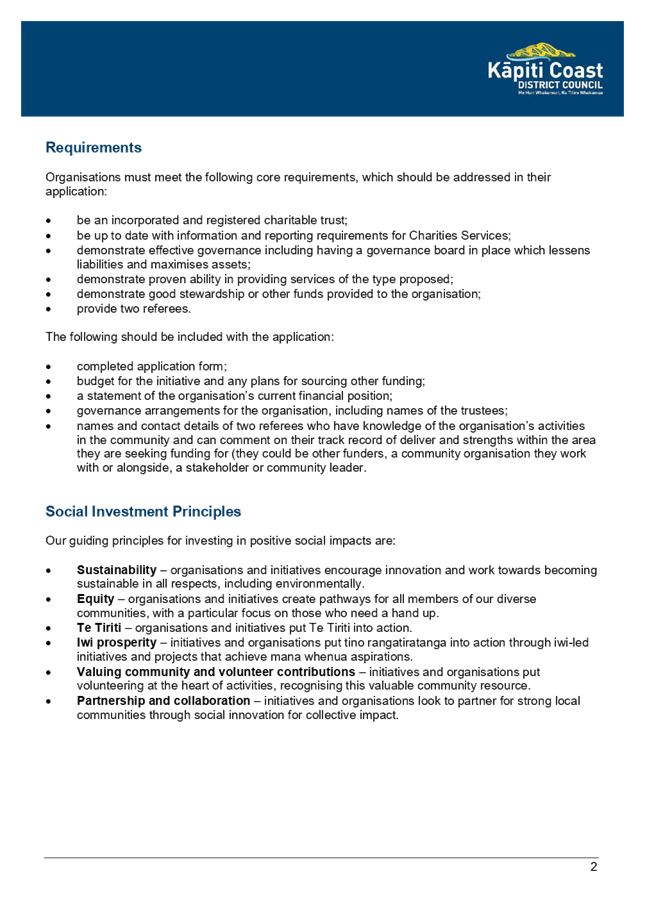
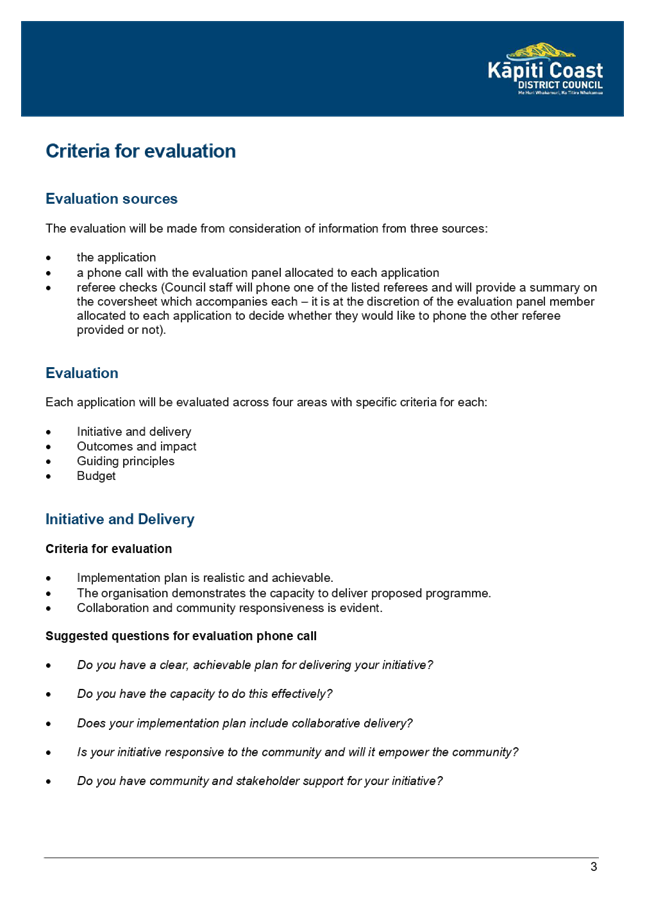
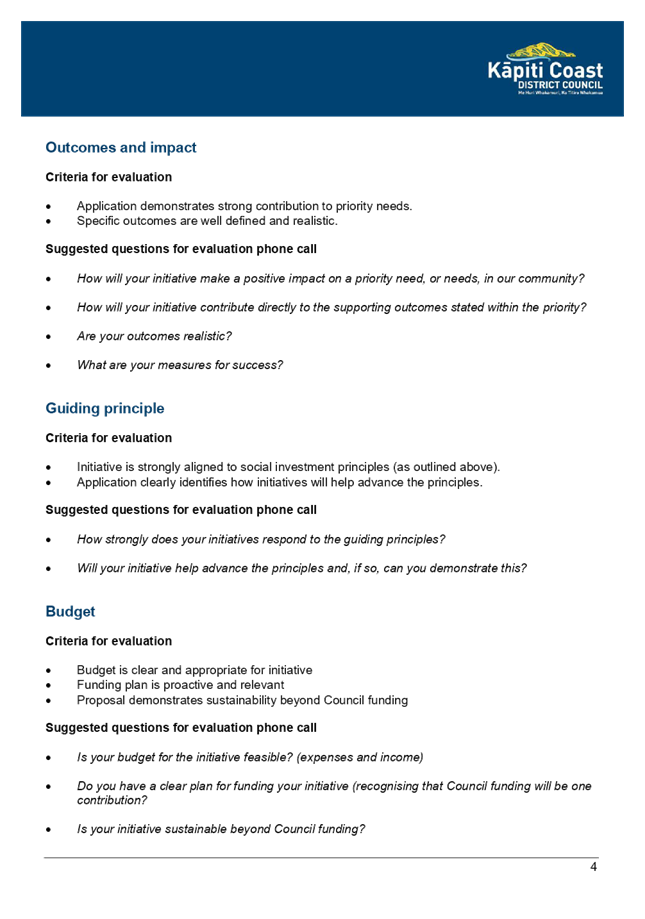
|
Council Meeting Agenda
|
7 April 2022
|
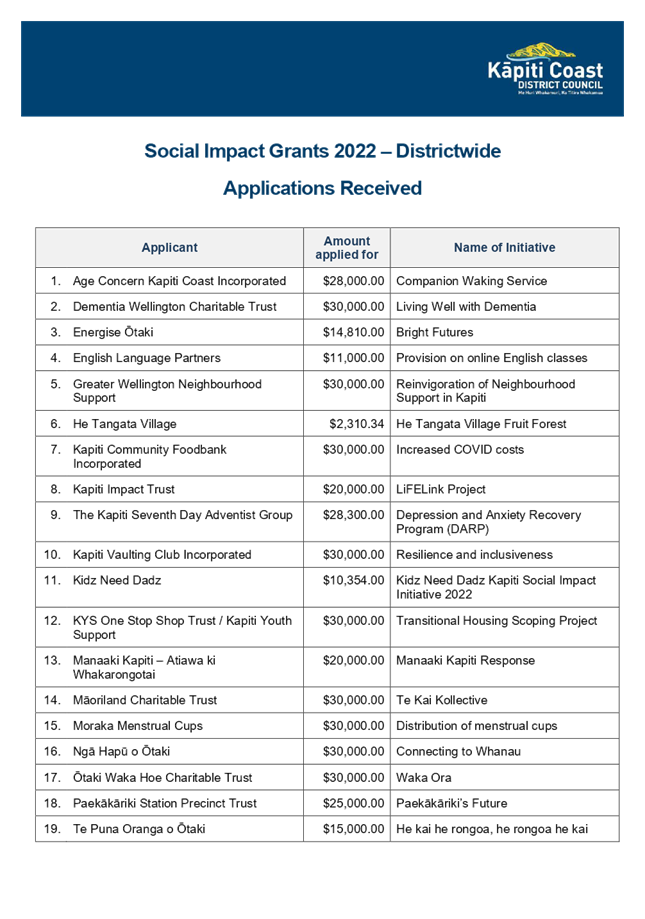
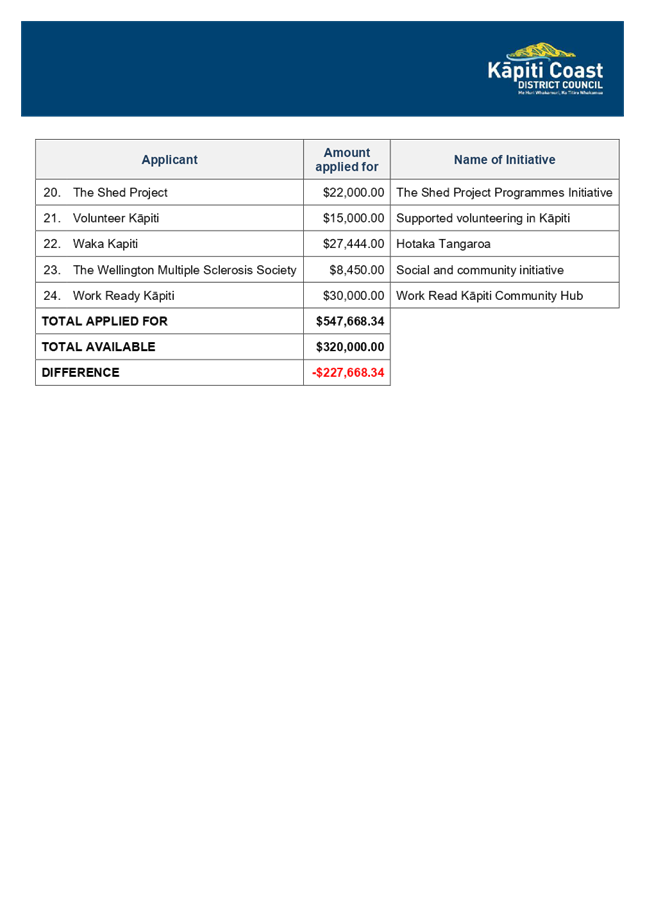
|
Council Meeting Agenda
|
7 April 2022
|
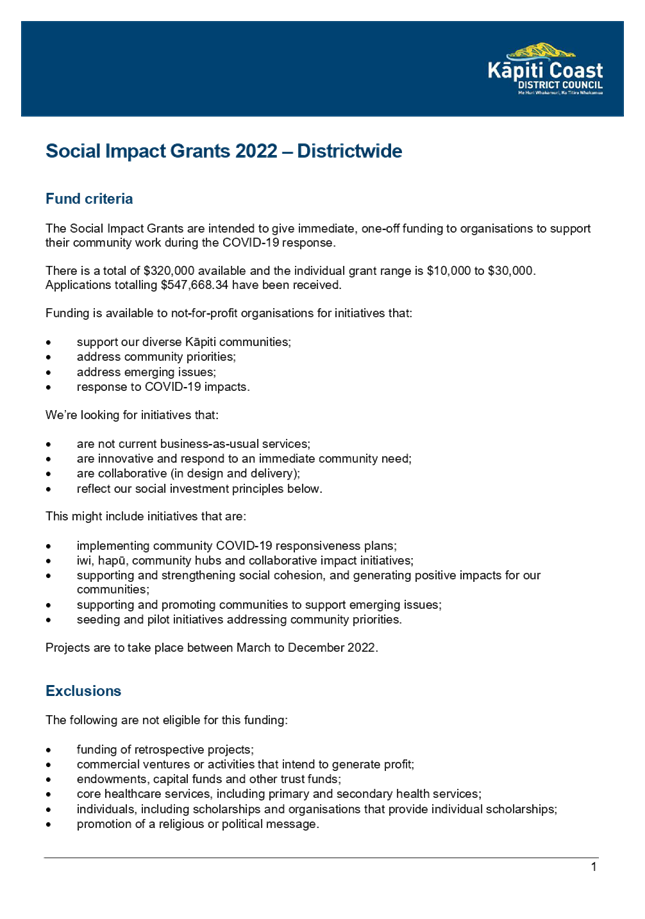
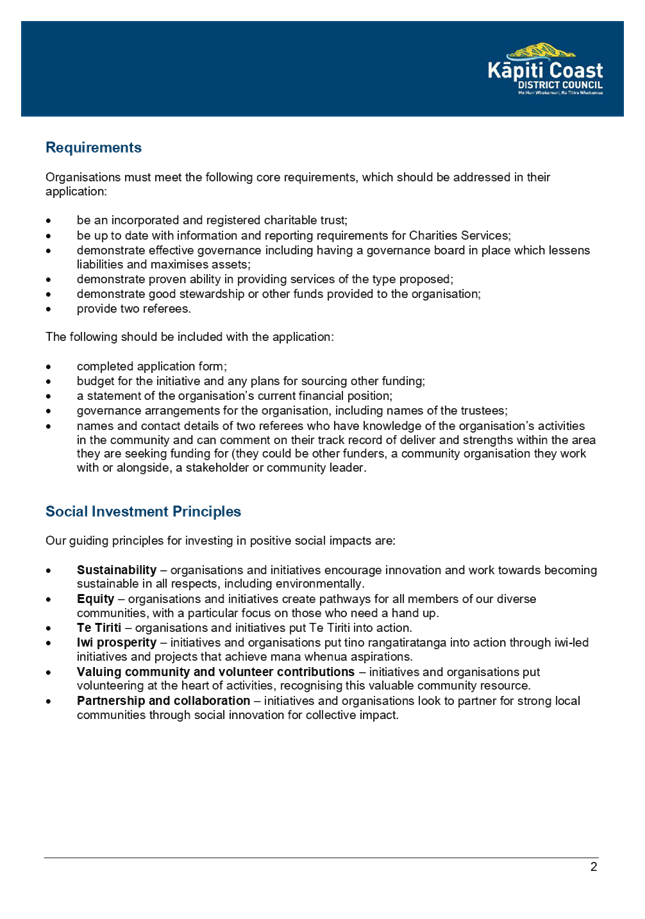
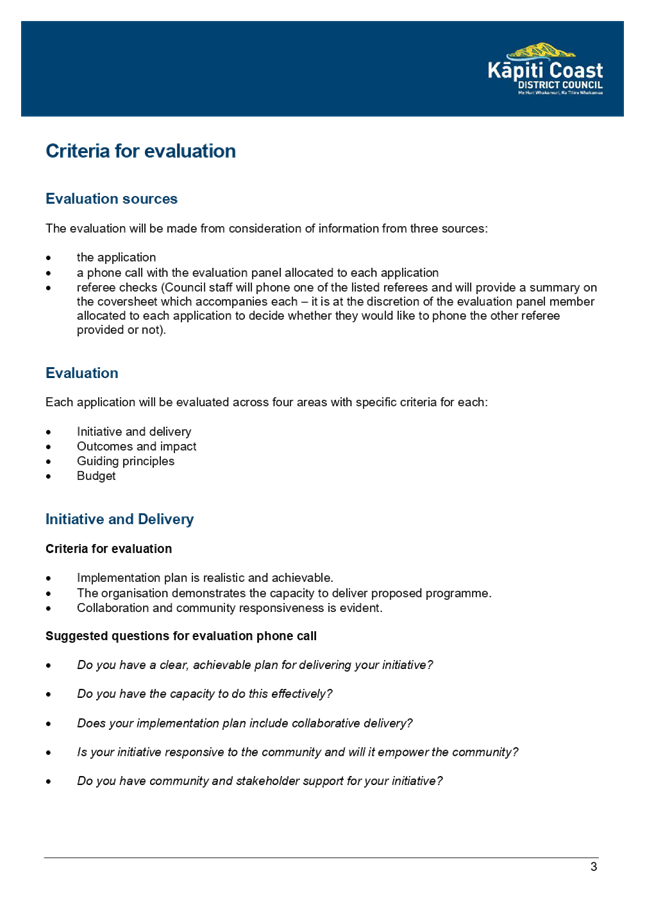
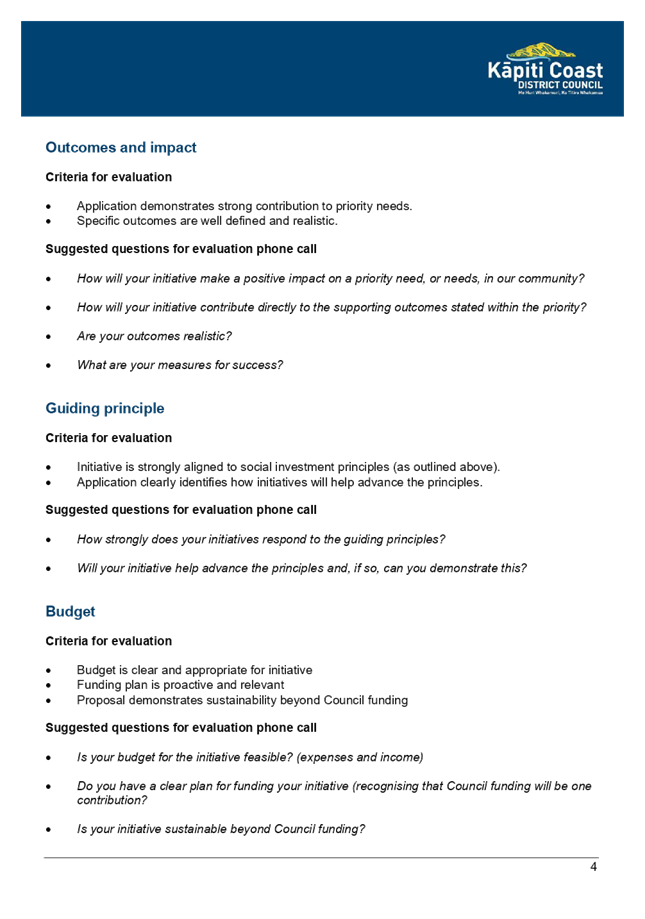
10.4 Reports
and recommendations from Standing Committees and Community Boards
Kaituhi |
Author: Fiona
Story, Senior Advisor Democracy Services
Kaiwhakamana
| Authoriser: Janice McDougall, Group Manager People and
Partnerships
Te pūtake |
Purpose
1 This
report presents reports and recommendations considered by Standing Committees
and Community Boards from 9 February 2022 to 9 March 2022.
He
whakarāpopoto | Executive summary
2 Not
required.
Te tuku haepapa
| Delegation
3 The
Council has the authority to consider recommendations made from Standing
Committees and Community Boards to the Council.
Taunakitanga | RECOMMENDATIONS
A. That
the Council notes the following recommendations from the Waikanae
Community Board on 15 March 2022:
That the Waikanae Community Board accepts the proposed
membership structure which forms part of the Terms of Reference for the Waimanu
Lagoons Focus Group, as follows:
|
|
Core
|
Observer
|
|
Waikanae Community Board (Chair)
|
1
|
|
|
Neighbours of Waimanu Lagoon Group
|
2
|
|
|
Friends of the Waikanae River
|
1
|
|
|
Tangata Whenua
|
1
|
|
|
Waikanae Estuary Guardians
|
1
|
|
|
Waimanu Care Group
|
1
|
|
|
Rotary Sailing Group
|
1
|
|
|
Forest and Bird Protection Society
|
1
|
|
|
Friends of Waikanae River
|
1
|
|
|
Waikanae Beach Residents
|
3
|
|
|
Department of Conservation
|
|
1
|
|
Wellington Regional Council
|
|
1
|
|
Parks and Reserves Department staff
|
|
1
|
That the Waikanae Community Board
requests that Council notes the above resolution.
B. That
Council receives this report (Reports and Recommendations from Standing
Committees and Community Boards).
Tūāpapa | Background
4 During
the period of 9 February 2022 to 9 March 2022, Standing Committee and Community
Board meetings took place on the following dates:
|
Strategy and Operations Committee
|
10 March 2022
|
|
Te Whakaminenga o Kāpiti
|
15 March 2022
|
|
Waikanae Community Board
|
15 March 2022
|
|
Ōtaki Community Board
|
22 March 2022
|
5 Items
discussed at each of the meetings listed in paragraph 4 are noted below:
5.1 On
10 March 2022, the Strategy and Operations Committee met to discuss:
· Adoption of the
Policy Work Programme 2021-2024
· Major Event Fund
Policy Update 2022
· Council
Performance for the half-year ended 31 December 2021
· Confirmation of
Minutes
· Confirmation of
Public Excluded Minutes
5.2 On
15 March 2022 Te Whakaminenga o Kāpiti met to discuss:
· Update on Waitangi
Day 2022
· Update on Māori Economic Development Grants 2021/22
· Update
on Marae Grants 2021/22
· Update
on Iwi Capacity Grants 2021/22
· Update
on Maramataka 2021/22
· Confirmation
of Minutes
5.3 On
15 March 2022 Waikanae Community Board met to discuss:
· Reikorangi Domain
Working Draft Reserve Management Plan (matter of an urgent nature)
· Election of Deputy
Chair and reallocation of Margaret Stevenson-Wright’s vacant roles
(matter of an urgent nature)
· Update on Waikanae
Beach Hall
· Waimanu Lagoons
Focus Group – Confirmation of Terms of Reference
· Confirmation of
Minutes
· Matters Under
Action
5.4 On
22 March 2022 Ōtaki Community Board met to discuss:
· Road Naming
– 7 Te Manuao Road, Ōtaki
· Road Naming
– 34-36 Te Manuao Road, Ōtaki
· Consideration of
Applications for Funding
· PP2O Update
· Confirmation of
Minutes
· Matters Under
Action
He
kōrerorero | Discussion
He
take | Issues
6 Within
the reports and recommendations considered by Standing Committees and Community
Boards from 10 March 2022 to 23 March 2022, there was one recommendation made
to Council.
7 That
recommendation was part of the Waikanae Community Board meeting on 15 March
2022 in relation to the Waimanu Lagoons Focus Group – Confirmation of
Terms of Reference and is set out in the ‘Recommendations’ section
above.
Ngā
kōwhiringa | Options
8 Options
are not required for this report.
Tangata whenua
9 There are no
tāngata whenua considerations relevant to this report.
Panonitanga āhuarangi | Climate change
10 There
are no climate change considerations relevant to this report.
Ahumoni me ngā rawa | Financial
and resourcing
11 There
are no financial and resourcing considerations relevant to this.
Ture me ngā Tūraru | Legal
and risk
12 There
are no legal considerations relevant to this report:
Ngā pānga ki ngā kaupapa here | Policy impact
13 This
report has no current or future impact on Council policies.
Te whakawhiti
kōrero me te tūhono | Communications & engagement
Te mahere tūhono | Engagement
planning
14 An
engagement plan is not required for this report.
Whakatairanga |
Publicity
15 No publicity is
required with regards to this report
Ngā āpitihanga | Attachments
Nil
11 Confirmation
of Minutes
11.1 Confirmation
of minutes
Author: Fiona
Story, Senior Advisor Democracy Services
Authoriser: Janice
McDougall, Group Manager People and Partnerships
|
Taunakitanga |
Recommendations
That the minutes of the Council
meeting of 24 March 2022 be accepted as a true and correct record.
|
Appendices
1. Minutes
of Council meeting - 24 March 2022 ⇩ 
|
Council
Meeting Agenda
|
7 April 2022
|
